#tevinter imperium
Explore tagged Tumblr posts
Text
Tevinter fashion





I like these stylized "corsets" that appear in some Tevinter outfits. I included different characters – not only Neve and Shadow Dragon Rook, but also Dorian and Tarquin. Sometimes they wear cummerbund, but I like these more.
Stylish Tevinters (what else did I expect? Nothing, they are awesome).
Also if anyone knows a proper name for this clothing item, I apologise. Unfortunately, I don't know a lot about fashion history, so I don't even know where to start.
#silent-words posts da#tevinter imperium#tevinter#tevinter fashion#dragon age#dav#dragon age the veilguard#neve gallus#rook mercar#shadow dragon rook#dorian pavus#tarquin
798 notes
·
View notes
Text

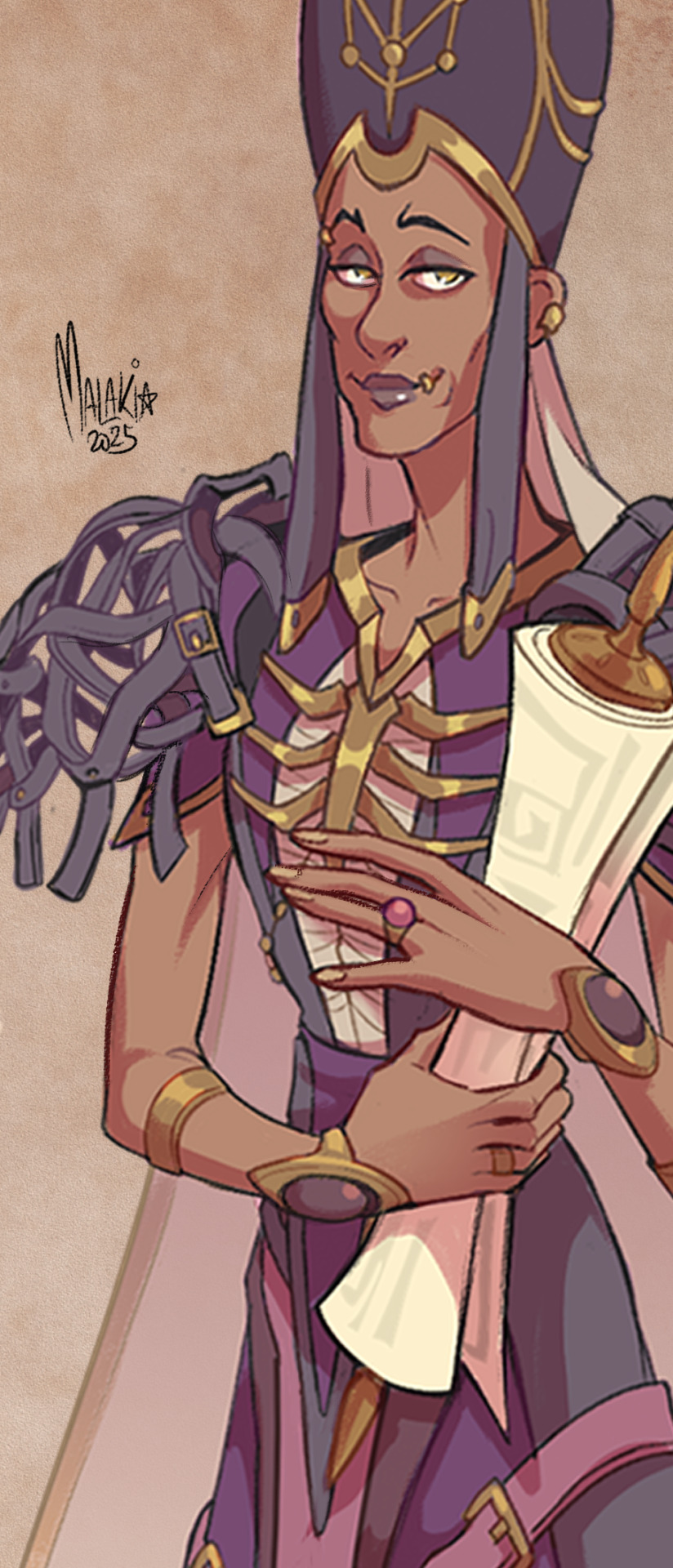
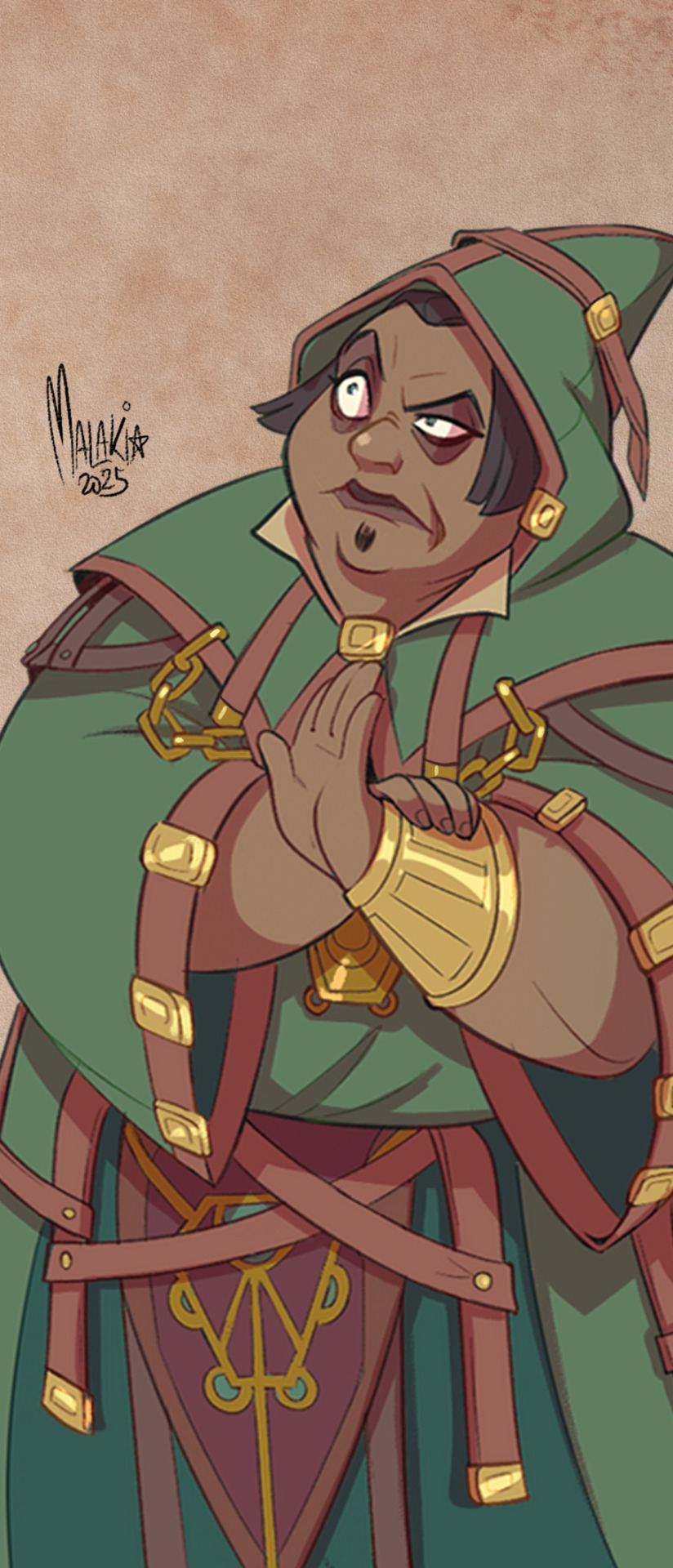
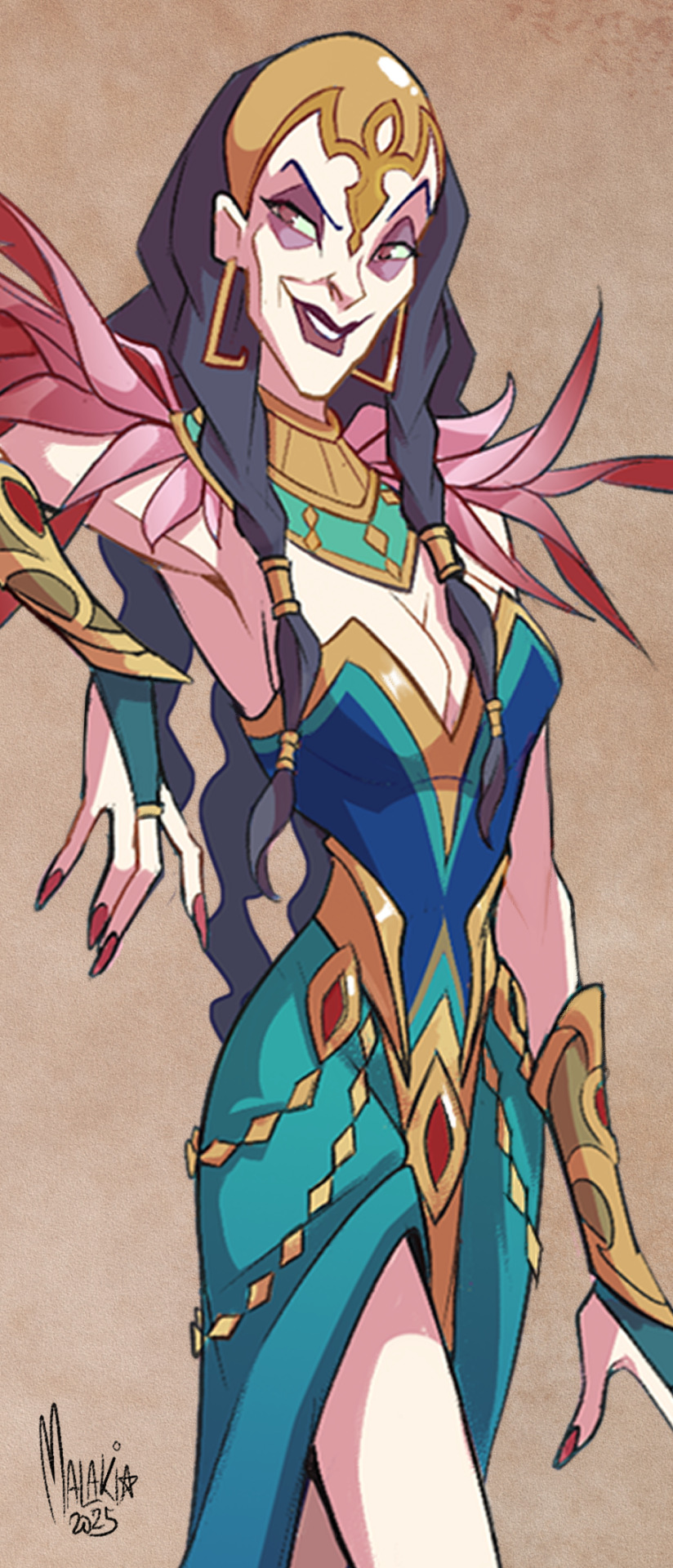
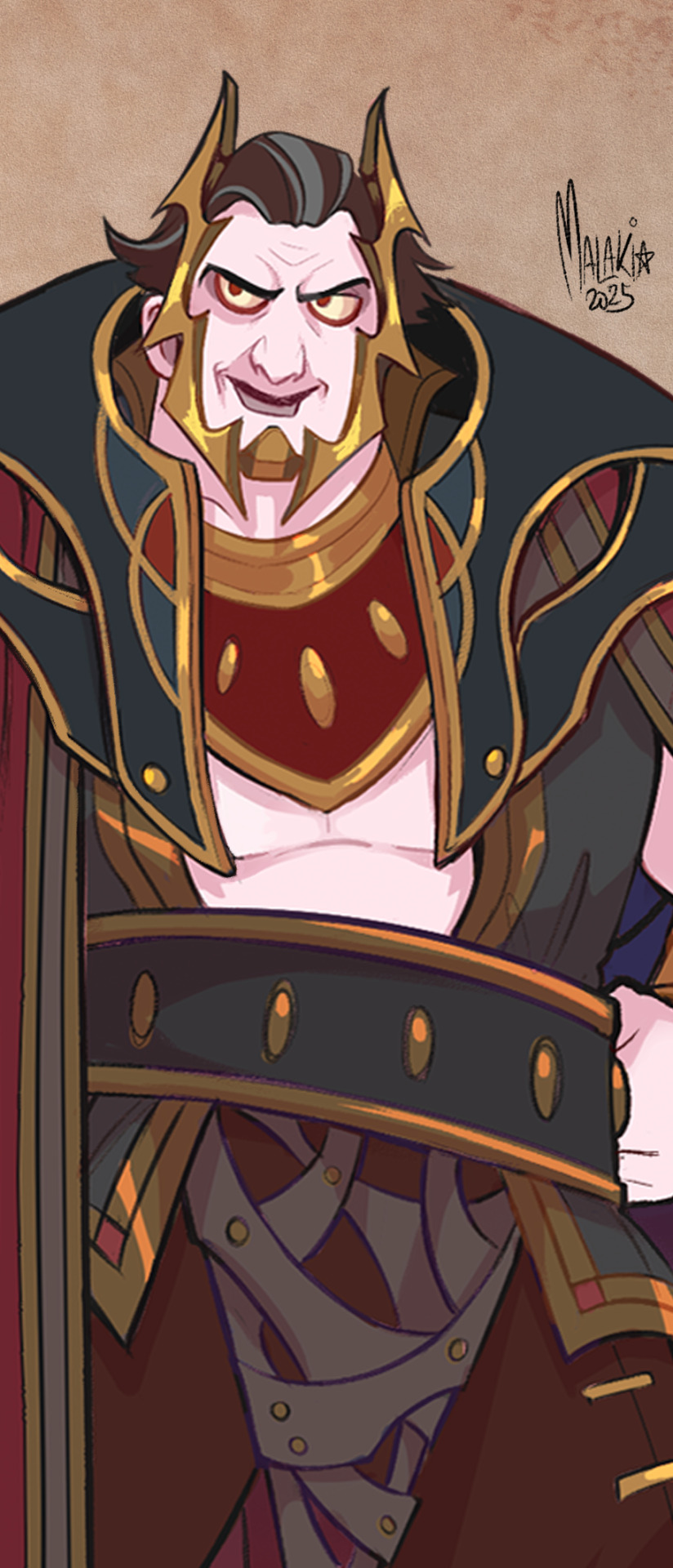
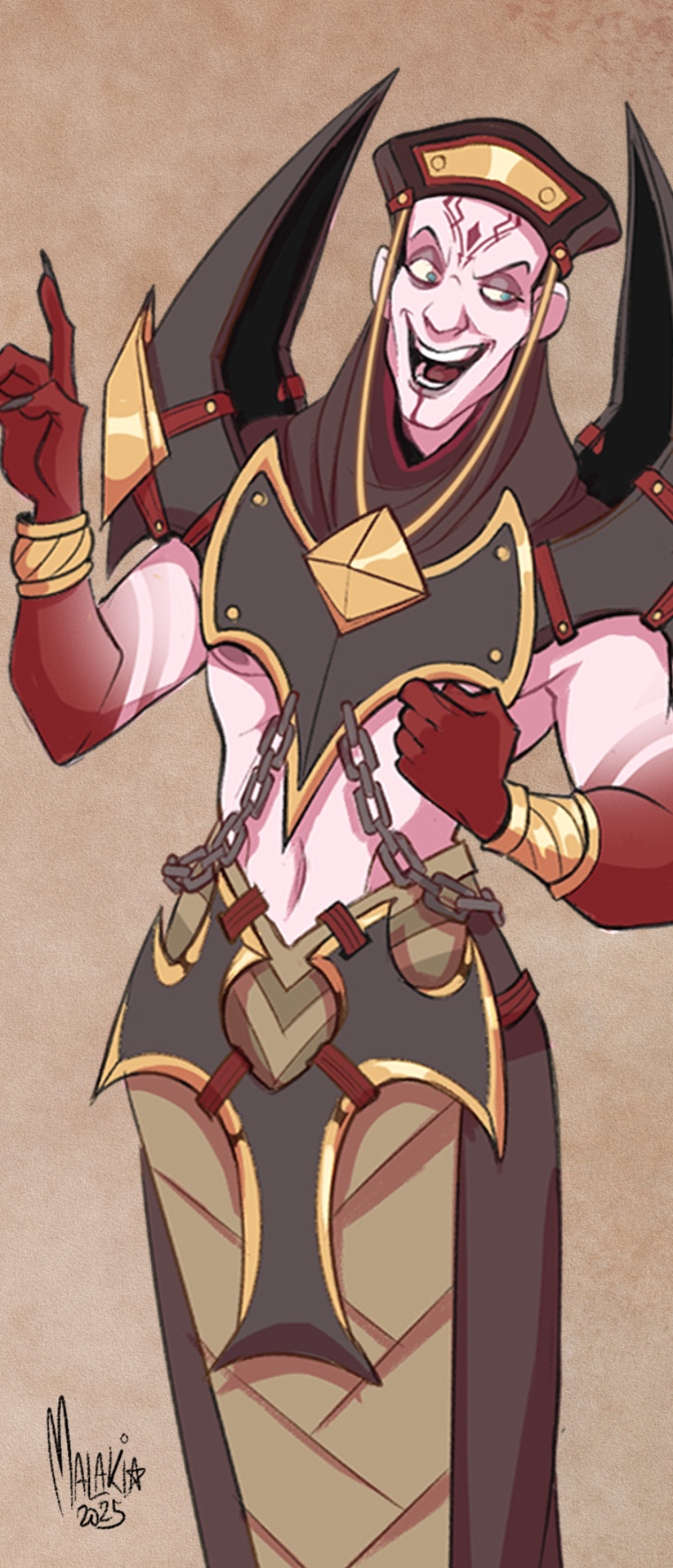
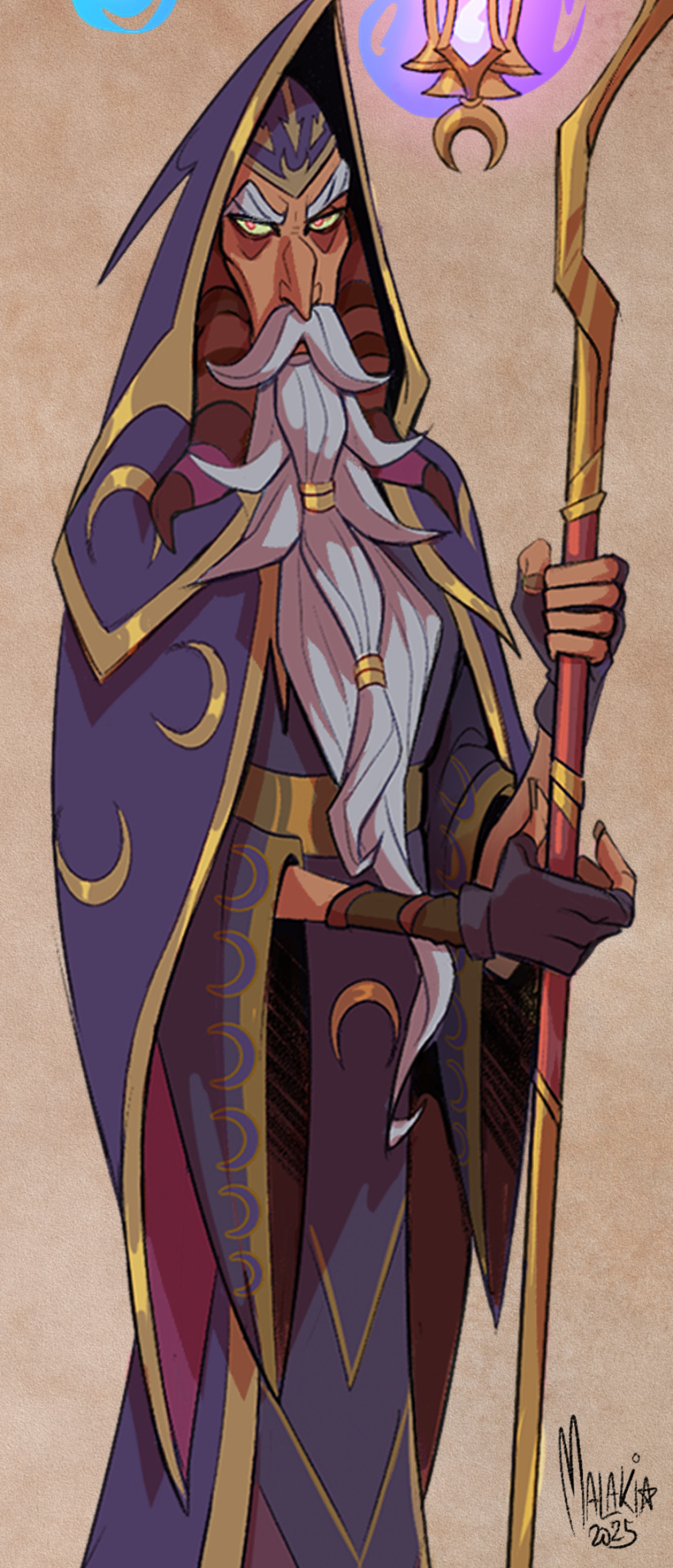
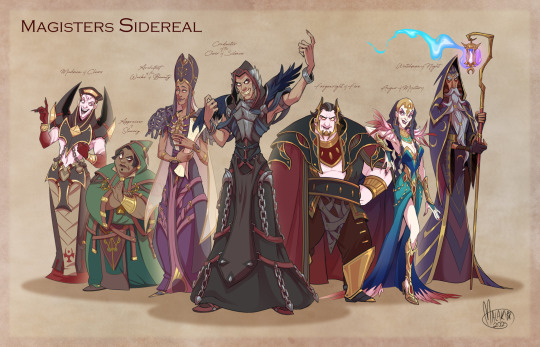
[ - Magisters Sidereals - ]
And each was promised Power and glory beyond all reckoning If they would only come to the feet of the gods and ask. And so they joined in secret, telling none Who were not of the temples of their designs. And in Minrathous, in the heart of the Archon a sliver of fear grew, Stabbing like a wound. Though he knew not why. —Silence 1:1-1:17, Dissonant Verse
They'll be featured in some Fade/flashback scenes later on in my fanfic 'Nothing but ambition where hearts once beat' so I decided to come up with some fun designs for these 7 bastards ♡
I was definitely going for that "you're playing with the big boys now" vibe from Prince of Egypt, lmao.
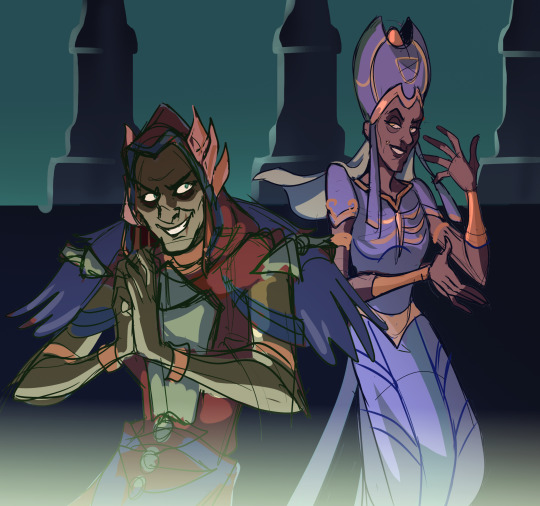
#dragon age origins awakening#dragon age origins#Dragon age art#Dragon age fanart#datv critical#Chant of Light#magisters sidereal#Tevinter Imperium#The Architect#Corypheus#Dragon age the Architect#DAO#DA2#Tevinter Old gods#Urthemiel#Dumat#razikale#Lusacan#Zazikel#Toth#Andoral#da fanfic#veilguard critical
407 notes
·
View notes
Text
DATV — A Little Breather🫂

(Ashur "The Viper" Vesperian & Tarquin) It's not easy to go from leading the Shadow Dragons, being the Divine and acting as an atlus mage :')
I missed drawing them!
Timelapse⤵
#veilguard#dragon age#da#fanart#dragon age fanart#dragon age the veilguard#lousticart#datv#tarquin#tashur#tarquin x ashur#ashur x tarquin#viperquin#shadow dragons#tevinter#tevinter imperium#dock town#minrathous#altus mage#ashur#ashur dragon age#ashur vesperian#imperial divine#black divine#veilguard spoilers
288 notes
·
View notes
Text

Minrathous 🐉 🐍
#dragon age#dragon age the veilguard#datv#da4#dragon age inquisition#da inquisition#tevinter imperium#minrathous#veilguard#shadow dragons#tarquin#the viper#neve gallus#dragon age tarquin#dragon age ashur#dragon age fanart#dragon age art
362 notes
·
View notes
Text
To me it 100% makes sense that the Inquisitor and Rook aren’t interested in blood magic.
When someone who grew up in Ferelden imagines a blood mage, they’re picturing their burnout cousin who brews moonshine and has punched a cop.
Northern Marchers, or anyone else who grew up within spitting distance of Tevinter, are picturing Mitch McConnell.
#southern mages: “blood magic is so edgy and dangerous”#northern mages: “I would never set foot in a maker-damned COUNTRY CLUB”#dragon age#dragon age the veilguard#dragon age spoilers#da4 spoilers#rook dragon age#inquisitor dragon age#dragon age inquistor#dragon age inquisition spoilers#dragon age shitpost#jowan dragon age#tevinter imperium#magisterium
1K notes
·
View notes
Text
Dragon Age: The Veilguard: Strangled by Gentle Hands
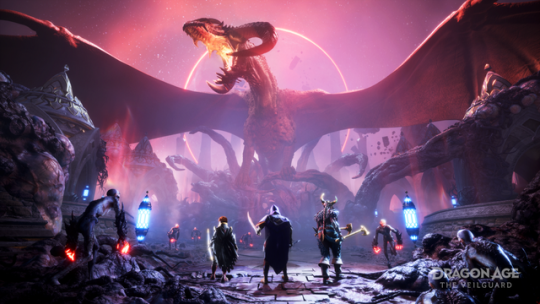
*The following contains spoilers*
“You would risk everything you have in the hope that the future is better? What if it isn’t? What if you wake up to find the future you shaped is worse than what was?”
– Solas, Dragon Age: Inquisition (2014)
I. Whatever It Takes
My premium tickets for a local film festival crumpled and dissolved in my pants pocket, unredeemed as they swirled in the washing machine. Throughout that October weekend in 2015, I neglected my celebratory privileges, my social visits to friends, and even my brutal honors literary theory class. All because a golden opportunity stretched before me: a job opening for a writing position at the once-legendary BioWare, with an impending deadline.
The application process wasn’t like anything I’d seen before. Rather than copy+paste a cover letter and quickly swap out a couple of nouns here and there, this opening required me to demonstrate my proficiency in both words and characters – namely, BioWare’s characters. Fanfiction wasn’t normally in my wheelhouse – at the time, I had taken mainly to spinning love sonnets (with a miserable success rate). But I wouldn’t balk at this chance to work on one of my dream franchises – especially since the job prospects for fresh English BAs weren’t exactly promising. So, I got to work crafting a branching narrative based on the company’s most recent title: Dragon Age: Inquisition. Barely two months prior, I saw the conclusion of that cast’s story when the Inquisitor stabbed a knife into a map and swore to hunt her former ally, Solas, to the ends of the earth. Now it was my turn to puppeteer them, to replicate the distinct voice of each party member and account for how they’d react to the scenario I crafted. And if it went well, then maybe I’d be at the tip of the spear on that hunt for Solas. Finishing the writing sprint left me exhausted, but also proud of my work.
The folks at BioWare obviously felt differently, because I received a rejection letter less than a week later. Maybe they found my story trite and my characterization inaccurate, or maybe they just didn’t want to hire a student with no professional experience to his name. Regardless, I was devastated. It wouldn’t be until years later that I learned that, had my application been accepted, I likely would’ve been drafted into working on the studio’s ill-fated looter shooter, Anthem (2019), noteworthy for its crunch and mismanagement. My serendipitous rejection revealed that sometimes the future you strive to build was never meant to match your dreams. What seemed like an opportunity to strike oil actually turned out to be a catastrophic spill.
Still, my passion for the Dragon Age series (as well as Mass Effect) persisted in the face of BioWare’s apparent decline. I maintain that Inquisition is actually one of the studio’s best games, and my favorite in the series, to the point where I even dressed up as Cole for a convention one time. The game came to me at a very sensitive time in my life, and its themes of faith vs falsehood, the co-opting of movements in history, and the instability of power all spoke to me. But I will elaborate more on that at a later date. My point is, I held on to that hope that, in spite of everything, BioWare could eventually deliver a satisfactory resolution to the cliffhanger from their last title. Or perhaps it was less hope and more of a sunk cost fallacy, as an entire decade passed with nary a peep from Dragon Age.
As years wore on, news gradually surfaced about the troubled development of the fourth game. Beginning under the codename “Joplin” in 2015 with much of the same creative staff as its predecessors, this promising version of the game would be scrapped two years later for not being in line with Electronic Arts’s business model (i.e. not being a live-service scam). Thus, it was restarted as “Morrison”. The project cantered along in this borderline unrecognizable state for a few years until they decided to reorient it back into a single-player RPG, piling even more years of development time onto its shaky Jenga tower of production. Indeed, critical pieces were constantly being pulled out from the foundations during this ten year development cycle. Series regulars like producer Mark Darrah and director Mike Laidlaw made their departures, and the project would go on to have several more directors and producers come and go: Matthew Goldman, Christian Dailey, and Mac Walters, to name a few key figures. They eventually landed on John Epler as creative director, Corinne Busche as game director, and Benoit Houle as director of product development. Then came the massive layoffs of dozens of employees, including series-long writer Mary Kirby, whose work still made it into the final version of DA4. Finally, the game received a rebranding just four months before release, going from Dreadwolf (which it had been known as since 2022) to The Veilguard (2024) – a strange title with an even stranger article.
Needless to say, these production snags did not inspire confidence, especially considering BioWare’s been low on goodwill between a string of flops like Anthem and Mass Effect: Andromeda (2017) and, before that, controversial releases like Dragon Age II (2011) and Mass Effect 3 (2012). The tumult impacted The Veilguard’s shape, which scarcely resembles an RPG anymore, let alone a Dragon Age game. The party size is reduced from four to three, companions can no longer be directly controlled, the game has shifted to a focus on action over tactics a la God of War (2018), the number of available abilities has shrunk, and there’s been a noticeable aesthetic shift towards a more cartoonish style. While I was open to the idea of changing up the combat (the series was never incredible on that front), I can’t get over the sensation that these weren’t changes conceived out of genuine inspiration, but rather vestigial traces from the live-service multiplayer iteration. The digital fossil record implies a lot. Aspects like the tier-based gear system, the instanced and segmented missions, the vapid party approval system, the deficit of World State import options, and the fact that rarely does more than the single mandatory companion have anything unique to say on a quest – it all points to an initial design with a very different structure from your typical single-player RPG. The Veilguard resembles a Sonic Drive-In with a mysterious interior dining area – you can tell it was originally conceived as something else.1
That said, the product itself is functional. It contains fewer bugs than any previous game in the franchise, and maybe BioWare’s entire catalog for that matter. I wouldn’t say the combat soars, but it does glide. There’s a momentum and responsiveness to the battle system that makes it satisfying to pull off combos and takedowns against enemies, especially if you’re juggling multiple foes at once. Monotony sets in after about thirty or forty hours, largely due to the fact that you’re restricted to a single class’s moveset on account of the uncontrollable companions. Still, this design choice can encourage replay value, as it does in Mass Effect, and free respec options and generous skill point allocations offset the tedium somewhat.
While the character and creature designs elicit controversy – both for the exaggerated art direction and, in the case of demons and darkspawn, total redesign – the environmental art is nothing short of breathtaking. I worried that this title would look dated because of how long it had been in development and the age of the technology it was built upon. Those fears were swiftly banished when I saw the cityscapes of Minrathous, the cyclopean architecture of the Nevarran Grand Necropolis, or the overgrown ruins of Arlathan. But like everything in The Veilguard, it’s a double-edged sword. The neon-illuminated streets of Docktown, the floating citadel of the Archon’s Palace, and the whirring mechanisms of the elven ruins evoke a more fantastically futuristic setting that feels at odds with all three previous titles (even though all three exhibited a stylistic shift to some extent). It aggravates the feeling of discordance between this rendition of Thedas and the one returning players know.
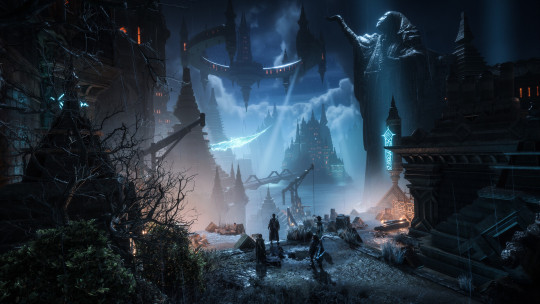
All of these elements make The Veilguard a fine fantasy action-adventure game – even a good one, I’d say. But as both the culmination of fifteen years of storytelling and as a narrative-based roleplaying game – the two most important facets of its identity – it consistently falls short. Dragon Age began as a series with outdated visuals and often obtuse gameplay, but was borne aloft by its worldbuilding, characterization, and dialogue. Now, that paradigm is completely inverted. The more you compare it to the older entries, the more alien it appears. After all these years of anticipation, how did it end up this way? Was this the only path forward?
Throughout The Veilguard’s final act, characters utter the phrase “Whatever it takes,” multiple times. Some might say too many. I feel like this mantra applied to the development cycle. As more struggles mounted, the team made compromise after compromise to allow the game to exist at all, to give the overarching story some conclusion in the face of pressure from corporate shareholders, AAA market expectations, and impatient fans. Whatever it takes to get this product out the door and into people’s homes.
This resulted in a game that was frankensteined together, assembled out of spare parts and broken dreams. It doesn’t live up to either the comedic heights or dramatic gravity of Inquisition’s “Trespasser” DLC from 2015, despite boasting the same lead writer in Trick Weekes. Amid the disappointment, we’re left with an unfortunate ultimatum: It’s either this or nothing.
I don’t mean that as a way to shield The Veilguard from criticism, or to dismiss legitimate complaints as ungrateful gripes. Rather, I’m weighing the value of a disappointing reality vs an idealized fantasy. The “nothing”, in this sense, was the dream I had for the past decade of what a perfect Dragon Age 4 looked like. With the game finally released, every longtime fan has lost their individualized, imaginary perfection in the face of an authentic, imperfect text. Was the destruction of those fantasies a worthy trade? It doesn’t help that the official artbook showcases a separate reality that could’ve been, with a significant portion dedicated to the original concepts for Joplin that are, personally, a lot closer to my ideal vision. I think it would’ve done wonders to ground the game as more Dragon Age-y had they stuck with bringing back legacy characters, such as Cole, Calpernia, Imshael, and the qunari-formerly-known as Sten.
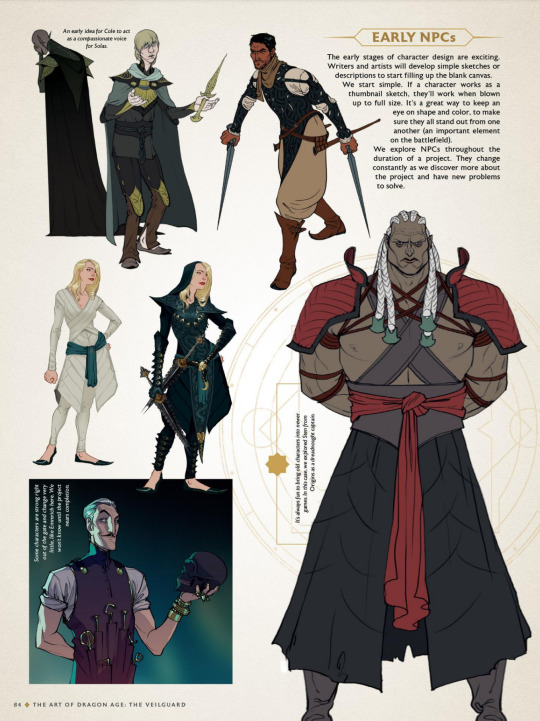
I don’t necessarily hate The Veilguard (I might actually prefer it to Dragon Age II), but I can’t help but notice a pattern in its many problems – a pattern that stems from a lack of faith in the audience and a smothering commitment to safety over boldness. As I examine its narrative and roleplaying nuances, I wish to avoid comparing it to groundbreaking RPGs such as Baldur’s Gate 3 (2023) or even Dragon Age: Origins (2009), as the series has long been diverging from that type of old-school CRPG. Rather, except when absolutely necessary, I will only qualitatively compare it to Inquisition, its closest relative.
And nowhere does it come up shorter to Inquisition than in the agency (or lack thereof) bestowed to the player to influence their character and World State.
II. Damnatio Memoriae
No, that’s not the name of an Antivan Crow (though I wouldn’t blame you for thinking so, since we have a character named “Lucanis Dellamorte”). It’s a Latin phrase meaning “condemnation of memory”, applied to a reviled person by destroying records of their existence and defacing objects of their legacy. In this case, it refers to the player. When it comes to their influence over the world and their in-game avatar, The Veilguard deigns to limit or outright eliminate it.
Save transfers that allow for the transmission of World States (the carrying over of choices from the previous games) have been a staple of the Dragon Age and Mass Effect franchises. Even when their consequences are slight, the psychological effect that this personalization has on players is profound, and one of many reasons why fans grow so attached to the characters and world. At its core, it’s an illusion, but one that’s of similar importance to the illusion that an arbitrary collection of 1s and 0s can create an entire digital world. Player co-authorship guarantees a level of emotional investment that eclipses pre-built backgrounds.
However, The Veilguard limits the scope to just three choices, a dramatic decrease from the former standard. All import options come from Inquisition, with two just from the “Trespasser” expansion. One variable potentially impacts the ending, while the other two, in most cases, add one or two lines of dialogue and a single codex entry. Inquisition, by contrast, imported a bevy of choices from both previous games. Some of them had major consequences to quests such as “Here Lies the Abyss” and “The Final Piece”, both of which incorporated data from two games prior. The Veilguard is decidedly less ambitious. Conspicuously absent options include: whether Morrigan has a child or not, the fate of Hawke, the status of the Hero of Fereldan, the current monarchs of Fereldan and Orlais, the current Divine of the southern Chantry, and the individual outcomes of more than two dozen beloved party members across the series. Consequently, the fourth installment awkwardly writes around these subjects – Varric avoids mentioning his best friend, Hawke, as does Isabela ignore her potential lover. Fereldan, Orlais, and the Chantry are headed by Nobody in Particular. Morrigan, a prominent figure in the latest game, makes no mention of her potential son or even her former traveling companions. And the absence of many previous heroes, even ones with personal stakes in the story, feels palpably unnatural. I suspect this flattening of World States into a uniform mold served, in addition to cutting costs, to create parity between multiple cooperative players during the initial live-service version of Morrison. Again, the compromises of the troubled production become apparent, except this time, they’re taking a bite out of the core narrative.
Moreover, the game’s unwillingness to acknowledge quantum character states means that it’s obliged to omit several important cast members. At this point, I would’ve rather had them establish an official canon for the series rather than leaving everything as nebulous and undefined as possible. That way at least the world would’ve felt more alive, and we could’ve gotten more action out of relevant figures like Cassandra, Alistair, Fenris, Merrill, Cole, and Iron Bull. Not to mention that The Veilguard’s half-measure of respectful non-intereference in past World States ultimately fails. Certain conversations unintentionally canonize specific events, including references to Thom Rainier and Sera, both of whom could go unrecruited in Inquisition, as well as Morrigan’s transformation into a dragon in the battle with Corypheus in that game’s finale. But whatever personal history the player had with them doesn’t matter. The entire Dragon Age setting now drifts in a sea of ambiguity, its history obfuscated. It feels as gray and purgatorial as Solas’s prison for the gods.
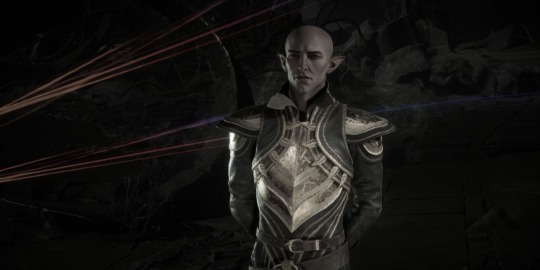
Beyond obscuring the past, The Veilguard restrains the player’s agency over the present. When publications first announced that the game would allow audiences to roleplay transgender identities and have that acknowledged by the party, I grew very excited – both at the encouraging representation, and at the depth of roleplaying mechanics that such an inclusion suggested. Unfortunately, The Veilguard offers little in roleplaying beyond this. The player character, Rook, always manifests as an altruistic, determined, friendly hero, no matter what the player chooses (if they’re offered choices at all). The selections of gender identity and romantic partner constitute the totality of how Rook defines themselves, post-character creation – exceptions that prove the rule of vacancy. Everything else is set in stone. The options presented are good, and should remain as standard, but in the absence of other substantive roleplaying experiences, their inclusion starts to feel frustratingly disingenuous and hollow, as if they were the only aspects the developers were willing to implement, and only out of obligation to meet the bare minimum for player agency. In my opinion, it sours the feature and exudes a miasma of cynicism.
Actual decisions that impact the plot are few and far between, but at least we have plenty of dialogue trees. In this type of game, dialogue options might usually lead to diverging paths that eventually converge to progress the plot. You might be choosing between three different flavors of saying “yes”, but as with the World States, that illusion of agency is imperative for the roleplaying experience. The Veilguard doesn’t even give you the three flavors – the encouraging, humorous, and stern dialogue options are frequently interchangeable, and rarely does it ever feel like the player is allowed to influence Rook’s reactions. Relationships with companions feel predetermined, as the approval system has no bearing on your interactions anymore. There are so few moments for you to ask your companions questions and dig in deep compared to Inquisition. Combined together, these issues make me question why we even have dialogue with our party at all. Rook adopts the same parental affect with each grown adult under their command, and it feels like every conversation ends the same way irrespective of the player’s input. With the exception of the flirting opportunities, they might as well be non-interactive cutscenes.
Rook’s weak characterization drags the game down significantly. With such limited authorship afforded to the player, it’s difficult to regard them as anything more than their eponymous chess piece – a straightfoward tool, locked on a grid, and moving flatly along the surface as directed.
III. Dull in Docktown
On paper, a plot summary of The Veilguard sounds somewhere between serviceable and phenomenal: Rook and Varric track down Solas to stop him from tearing down the Veil and destroying the world. In the process, they accidentally unleash Elgar’nan and Ghilan’nain, two of the wicked Evanuris who once ruled over the elven people millenia ago. With Solas advising them from an astral prison, Rook gathers a party together to defeat the risen gods, along with their servants and sycophants. Over the course of the adventure, they uncover dark truths about the origins of the elves, the mysterious Titans, and the malevolent Blight that’s served as an overarching antagonistic force. Eventually, Rook and friends join forces with Morrigan and the Inquisitor, rally armies to face off with their foes, and slay both the gods and their Archdemon thralls before they can conjure the full terror of the Blight. As Solas once again betrays the group, Rook and company have to put a decisive stop to his plans, which could potentially involve finally showing him the error of his ways.
The bones of The Veilguard’s story are sturdier than a calcium golem. Problems arise when you look at the actual writing, dialogue, and characterization – the flesh, blood, and organs of the work.

I’ve seen others chide the writing as overly quippy, but that better describes previous titles. Rather, I think The Veilguard’s dialogue is excessively utilitarian and preliminary, like a first draft awaiting refinement. Characters describe precisely what’s happening on screen as it’s happening, dryly exposit upon present circumstances, and repeat the same information ad nauseum. This infuriating repetition does little to reveal hidden components of their personalities, or their unique responses to situations. You won’t hear anything like Cole’s cerebral magnetic poetry or Vivienne’s dismissive arrogance. Many exchanges could’ve been uttered by Nobody in Particular, as it’s just dry recitation after recitation. It almost feels like watching an English second language instructional video, or a demonstration on workplace safety precautions. Clarity and coherence come at the cost of characterization and charisma.
Words alone fail to make them interesting. Most companions lack the subtlety and depth I had come to expect from the franchise, with many conversations amounting to them just plainly stating how they’re feeling. Most rap sessions sound like they’re happening in a therapist’s office with how gentle, open, and uncomplicated they feel. Compare this to Inquisition, where every character has a distinct voice (I should know, I had to try to copy them for that stupid application), as well as their own personal demons that it betrays: Sera’s internalized racism, hints of Blackwall’s stolen valor, Iron Bull’s espionage masked by bluster, or Solas’s lingering guilt and yearning for a bygone age. These aspects of their characters aren’t front and center, but things the audience can delve into that gives every moment with them more texture. The Veilguard’s companions lay out all their baggage carefullly and respectfully upfront, whether it’s Taash’s multiculturalism and gender identity issues or Neve’s brooding cynicism towards Tevinter’s underbelly. You’ve plumbed the depths of their personas within the first few minutes of meeting most of them.
Small exceptions exist. Professor Emmerich Volkarin stands out from the rest of the cast as a particularly inspired character: a charming, Vincent Price-like necromancer. His attachment to tombs and necromancy as a way to cope with his crippling fear of death makes for curiously compelling melodrama. The way in which he ultimately has to face his fear – either by foregoing his opportunity for immortality to save his beloved skeletal ward, Manfred, or by allowing his friend to pass on so that he can transcend into a new type existence – rises above the other binary choices in the game by being both narratively interesting and legitimately difficult to judge. Still, I feel Emmerich’s whole “lawful good gentleman necromancer” conceit, while a unique and clever subversion of tropes, would’ve worked better if it actually contrasted with anyone else in the party. Instead, the whole crew is full of unproblematic do-gooders who are forbidden by the game to nurture any meaningful interpersonal conflict. While I’d appreciate this lack of toxicity in my real-life relationships, fictional chemistry demands more reactive ingredients.

The Veilguard’s developers frequently positioned the game as “cozy” and about a “found family”, but I can guarantee you that there’s more tension at my Thanksgiving dinners than there is anywhere in this title. This family would get along swimmingly even during a presidential election. The thing about the “found family” trope is that it’s more satisfying when it’s earned. Here, it represents the default state, the starting point, and the status quo that they will always return to. Any minor squabbles (Harding wanting to sleep in the dirt, Emmerich taking too many books on a camping trip, Taash not liking necromancy) are introduced and squashed within the same scene. They all feel so extraneous. There’s so little friction among the companions here that you’d think it disproves Newton’s Third Law. The previous games never struggled in this regard, which makes the choices here all the more baffling.
Beyond the intra-party dynamics, characters lack grit or darkness to them – even when the narrative absolutely calls for it. Remember how I described the necromancer as lawful good (to use traditional Dungeons and Dragons alignments)? Yeah, that’s every character. Even the demonic assassin. Lucanis is a notorious hitman possessed by a demon of Spite, and possibly the weakest character of the game. This may or may not be due to the fact that his writer, Mary Kirby, was laid off mid-development. Regardless, he has noticeably less content than the other party members and generally feels unfinished. The demonic possession storyline goes nowhere; he doesn’t exorcise Spite, nor does he learn more about it or how to live with it. Instead, Spite is just an excuse to give Lucanis cool spectral wings (which he will use to fail several assassination attempts). The demon itself mostly just comes across as rude rather than threatening. The biggest issue, however, stems from the absence of any edge to Lucanis. When confronting his traitorous cousin, Ilario – the man who sold out Lucanis’s family to an enemy faction, kidnapped his grandmother, and made multiple attempts on his life – our grizzled, hardened assassin, pushed to the brink, demands… due process. Seriously, if your choices have led Lucanis to have a hardened heart, his method for dealing with the grievous traitor is sending him to jail. That’s The Veilguard’s idea of vindictive brutality among a clan of unforgiving murderers-for-hire. By contrast, Inquisition features Sera insubordinately murdering a stuck-up nobleman for talking too much. I believe that if modern BioWare had written The Godfather (1972), it would’ve ended with Michael Corleone recommending his brother-in-law to attend confession and seek a marriage counselor.
The writers seem intent on making the cast wholly unproblematic, with no way that the audience could ever question their morality or taste the delicious nuance of seeing someone you like do something bad. Measures were taken to child-proof every aspect of the good guys so that they couldn’t possibly be construed as anything else – even if it constricts them to the point of numbness and eventual atrophy.
To make things as palatable and accessible as possible, the language itself was dumbed down. Characters make frequent use of neologisms and bark phrases like “Suit up,” or “These guys go hard.” It emulates popular blockbuster superhero stuff rather than staying true to the diction the series traditionally employed. It’s all about the team, and the entire Dragon Age world has been stripped down into simplistic conflicts and recognizable stock characters.
This is why The Veilguard’s story largely fails. Despite being ostensibly being about the characters, they come off as an afterthought. Most of the time, only the sole requisite follower has anything to say on a given mission. Even in combat, their wholeness as fully-implemented party members falls short of expectations. Their damage output pales in comparison to the Rook’s, they have no health and cannot be downed in battle, and they mainly exist to give the player three extra ability slots. That’s the game’s true ethos for the companions, whether in combat or dialogue – utility, tools to make things happen rather than elegantly crafted identities. We end up with the largest amount of content per companion among any game in the franchise, only to have the weakest roster.
I know these writers can do better, because I’ve seen them do better. Trick Weekes wrote Iron Bull, Cole, and Solas in Inquisition, as well as Mordin Solus and Tali’Zorah in Mass Effect 2 (2010) and Mass Effect 3. Mary Kirby wrote Varric throughout the series, as well as Sten and Loghain in Origins. Plenty of other experienced writers, such as Sylvia Feketekuty and John Dombrow also contributed, so I can’t put any of the blame on a lack of skill. I don’t know if the mistake was trying to appeal to a wider audience, or if the constant reorientations of the DA4 project drained the crew’s passion and left them lacking in time to polish things.
I personally suspect that the writers had to rush out a script for all of the voiced dialogue. A video from August of 2020 showed off the voice actors for Davrin and Bellara, more than four years before the final game’s release. I think the codex entries, letters, and missives that you find throughout the game, which consist of only text, are much better written than the dialogue. My theory is that the writers had more time to revise and spruce up these tidbits, where edits were minimally invasive, as far as production is concerned. But my knowledge is limited; after all, BioWare rejected my application almost a decade ago.
Still, there are aspects of The Veilguard’s plot that I enjoy. The lore reveals were particularly satisfying2, and many felt rewarding after a decade of speculation. I called that elves were originally spirits, as well as the connection between the Archdemons and the Evanuris, but I wouldn’t have guessed that the Blight formed out of the smoldering rage of the Titans’ severed dreams. I’d concisely describe The Veilguard’s story as the opposite of Mass Effect 3: Whereas ME3 did excellent character work, the characterization in The Veilguard leaves much to be desired. Whereas ME3’s tone was overwhelmingly grim, The Veilguard feels inappropriately positive. Whereas ME3’s lore reveals ruined much about the series’s mystique, The Veilguard’s helped tie the setting’s history together. And whereas ME3 fumbled the ending about as much as it possibly could, The Veilguard actually coalesces into a spectacular third act.
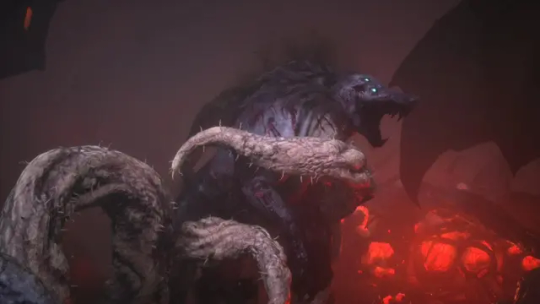
While I think the twist with Varric’s death is weak (outright pitiful compared to the Dread Wolf twist of Inquisition), the actual events that make up the finale carry a momentum and urgency that the rest of the game severely lacked. Everything from the sacrifice and kidnapping of Rook’s companions to the slaying of Ghilan’nain to the awe-inspiring battle between the Dread Wolf and Archdemon Lusacan – the whole affair takes the best parts of Mass Effect 2’s Suicide Mission and elevates it to the scale of an apocalyptic series finale. Ultimately, Solas takes center stage as the final antagonist, and the drama crescendos to a height the rest of the game desperately needed. He remains the most interesting character in the game and perhaps the franchise, and thankfully, the resolution to his story did not disappoint me (though I would’ve preferred the option for a boss battle against his Dread Wolf form if the player’s negotiations broke down). So in that sense, I think the worst possible scenario was avoided.
But is that really worth celebrating? Averting complete disaster? Exceeding the lowest standards? In many regards, The Veilguard still could have been – should have been – more.
IV. A World of Tranquil
In my essay on Final Fantasy VII: Rebirth (2024), I briefly discussed a trend in media to sand off the edges so as not to upset the audience in any way. The encroachment of this media sanitization seems to be an over-correction to the brimming grimness of late 2000s and early 2010s fiction (to which the first two Dragon Age titles belong), which earned comparable levels of criticism. Like Solas, I occasionally feel trapped in a cycle of regret, where it feels like our previous yearning for less aggressive, mean-spirited content led to a media landscape that prioritized patronizingly positive art. Now it’s clear to me that, in order to have a point, you need to have an edge.
Dragon Age historically drew a very progressive audience, and many of them congregated around Tumblr in that website’s heyday. Tumblr has garnered something of a reputation for overzealous discourse and sensitivity among its userbase, and I think that the developers of The Veilguard, in an attempt to cater to one of their core audiences, may have misunderstood both that passion and the fundamental appeal of their products. They became so concerned about optics, about avoiding politically charged criticism, that they kneecapped their world-building, rendering it as inoffensive and sterile as possible. It’s not so much “PC culture” as it is “PG culture.”
To that end, the various governments, factions, and societies of Thedas lost their edge. Dragon Age previously presented itself as anti-authoritarian by showcasing the rampant abuses of power across all cultures. Whether it was the incarceration of mages under the Chantry, the slavery practiced by the Tevinter Imperium, the expansionist anti-individualism of the Qun, the restrictive dwarven caste system, or the rampant racism against elves, social strife abounded in this world. I think that’s one thing that drew so many marginalized fans to the series. But the correlation of fictional atrocities with those of real life frequently prompted volatile discourse, with many concerned about how allegedly allegorized groups were being represented. You began to see countless essays pop up by folks who use the phrase “blood quantum” more than any healthy person should for a setting about wizards. BioWare responded to this by making Thedosian society wholly pleasant and the people in power responsible and cool and the disparate cultures tolerant and cooperative. If nothing’s portrayed negatively (outside of the cartoonishly evil gods), nobody can take offense, right?
For starters, the Antivan Crows have gone from an amoral group of assassins to basically Batman. These figures, which previously purchased children off slave markets to train them into killers, are now the “true rulers” of Antiva, by which the official government derives its authority. The Crows in The Veilguard stand against the insurgent qunari army as heroes of the common folk. They’re not an unscrupulous faction that Rook is reluctantly forced to ally with for the greater good; no, the Crows are simply good guys now. When the pompous governor of Treviso rails against them, with such audacious claims as “assassins and thugs should not represent the citizenry,” we’re meant to laugh at the governor’s foolishness. The unintentional implication this sends is that lethal vigilantism and unchecked power are cool because the people who use it are cool and stylish. The slave trade goes unacknoweldged; Antivan children want to grow up to be assassins now. The Crows never do anything wrong in The Veilguard – the governor is later revealed to be cooperating with the invaders for their own power. BioWare avoids the unpleasantness inherent in the Crows’ concept by pretending it never existed.
Perhaps more ridiculous is the Lords of Fortune, a new faction of pirates and treasure hunters based out of Rivain. Except they don’t really do piracy or treasure hunting. The game goes to lengths to ensure that the audience knows that the Lords don’t steal important cultural artifacts from any of the tombs and ruins they raid. What do they steal, then? There is no such thing as an ethical treasure hunter – plundering indigenous sites for souvenirs is inherently problematic – but the writers wanted to reap the appeal of adventurous swashbucklers without any of the baggage, regardless of whether it makes sense or not3. It comes across as a child’s idea of a pirate: they’re not thinking about the murder and looting, just the funny men with eye-patches who say “ARRR!” The developers want us to like the Lords of Fortune, and to that end, they can’t do anything culturally insensitive – even fictional disrespect toward a made-up culture. This is doubly amusing because the Lords are represented by Isabela from Dragon Age II. The same Isabela that kicked off a war with the qunari by stealing their holy book, the Tome of Koslun. This irony goes unacknowledged by the game.4
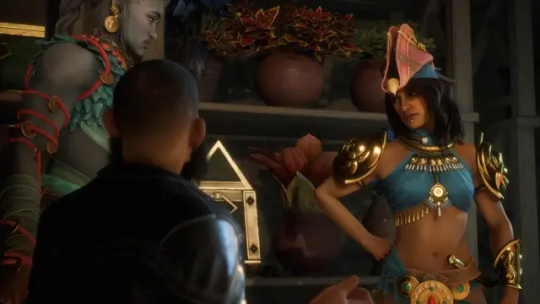
When these rogue buccaneers aren’t busy giving land acknowledgments to displaced Dalish elves or whatever, they’re enjoying their nonviolent coliseum. Pirates revel in bloodsport, but only so long as no actual blood is spilled. The Lords refuse to fight prisoners or animals in their arena, as they find such acts too cruel. I guess they’re all big Peter Singer readers. Instead, they summon spirits to adopt the visages of common enemies so that the player can kill them with a clean conscience. It’s another example of wanting to have your cake and eat it too – they wanted to create a glory hunter/gladiator faction, but couldn’t stand the underlying implications of such. So they twisted and bent them to fit into their unproblematic paradigm, leaving the Lords flavorless and lame. They barely even contribute to the main story, and they’re practically the only look we get into Rivaini society (which remains criminally underdeveloped).
More tragic is the handling of the qunari, once one of the most unique and nuanced civilizations in the Dragon Age setting. The Qun, as portrayed in the first three installments, is a society that demands all of its composite parts work in harmony. Thus, they have predetermined vocations for their children, rigid gender roles, strict codes of conduct, and an ambition to “enlighten” the rest of the world. While the Qun has often been presented as antagonistic toward the heroes, the series has commonly balanced its portrayal by showing how seductive its absolutism can be for people without hope. In some cases, life under the Qun is preferable, as is the case with former Tevinter slaves. Conformity becomes comfort when the world is regularly threatening to split apart.
The Veilguard opts for a different approach. See, Rook’s not fighting members of the Qun in this game – they’re fighting the Antaam, the former qunari military. The Veilguard constantly reiterates that the Antaam, which makes up one of the three branches of the Qun, has broken off and decided to invade, pillage, and stoke chaos. BioWare didn’t want the questionable morality and complexity of fighting an invading people from a humanized, multi-faceted culture, so they removed their culture. Their efforts to turn the non-Western-coded qunari into something digestible for their mistaken conception of a modern audience instead results in two caricatures: one being a fetishized, perfect society where there are no perceivable social ills; and the other a bunch of rampaging brutes.
Contending with a realized conception of Plato’s Republic mixed with the Ottoman Empire makes for more compelling drama than a horde of murderous giants. Again, BioWare wanted to have it both ways, and they still needed nameless, faceless orcs to kill. So every bit about the qunari’s militancy, imperialism, and repression coexisting alongside some of their more progressive ideas and communal unity is stripped of its context and meaning. Blame is placed solely on the Antaam, who no longer represent (and retroactively, never represented) the Qun’s ideology. It’s a cowardly compromise, attempting to pin the blame of all the Qun’s failings on a renegade military and seeking to exonerate the political and social apparatuses of their culpability.
At one point, a minor character named Seer Rowan lectures to an ignorant human (a proxy for the audience absorbing these retcons) that qunari society has always been egalitarian in practice, with mages enjoying freedom there. Previous games showed that the qunari shackle their “saarebas” mages, stitch their mouths, cut out their tongues, and teach them to commit suicide if they ever stray from their masters. However, we’re now assured that this is only practiced under the Antaam, and No True Qunari would ever do such a thing. Ignore the fact that, in Inquisition, we witness the enslaved saarebas under the supervision of the Ben-Hasserath, a subdivision of the Ariqun (i.e. not part of the Antaam). In fact, the Antaam that Rook fights in The Veilguard never command saarebas at all. They’re completely absent from the game (likely because the image of the bound, mutilated minority was too much for The Veilguard’s sensibilities). Seer Rowan’s weak, conciliatory retcon can’t even justify itself in its own game. The scolding diatribe communicates an intrinsic misunderstanding of the Qun by the writers – namely, it continues the pattern established with the Antivan Crows that the mechanics of power in society are fundamentally good as long as aberrant forces aren’t in charge. While I understand the desire to be conscientious about the portrayal of fictional cultures that draw upon non-Western traditions and iconography (which have historically been demonized in media), glamorizing the Qun and stripping it of its realistic nuance does little to alleviate any problems with representation. If anything, it creates new ones.
But hey, now we have our faceless orcs to guiltlessly slaughter. That’s what the Antaam’s been reduced to, bereft of the ideology that made them people. We kill them because they’re strange and scary and foreign and seeking to destroy our cities for fun. They remain the most prominent representation of the qunari in-game, barring our party member Taash. BioWare’s attempts to reverse what they viewed as problematic components to the qunari instead devolved into the very tropes they wished to avoid.
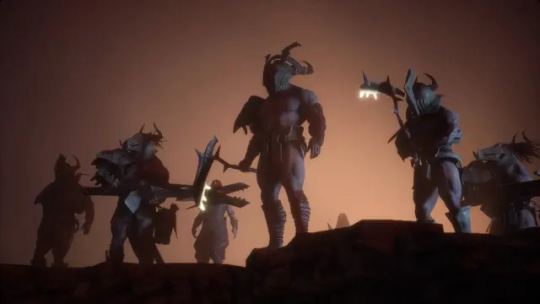
Which leads us to the elves. Much of the series’s discourse has surrounded the portrayal of the long-suffering elven people, who endure slavery under Tevinter, expulsion from their homeland in the Dales, confinement in ghettos, and the general disdain from other races. The games’ stories use symbolic shorthand of real-life oppressed peoples to communicate these tragedies, and this has led to a variety of intense, emotional interpretations over the years. The unending misery of the systematically marginalized elves hasn’t gone unnoticed by the fanbase – and their criticisms haven’t gone unnoticed by the developers. To quote The Veilguard’s creative director, John Epler, in an interview with Polygon:
“Dragon Age has not always been the kindest to the Dalish [elves]. Somebody once made a joke to me, and it’s not untrue, that it’s possible to wipe out a Dalish clan in all three of the games in some way.”
He and others on the development team must’ve thought elves needed a break, because the omnipresent racism against them vanishes completely in The Veilguard. Tevinter, an empire built on the back of chattel slavery, doesn’t show any of that. Consequently, it feels like players in the know still haven’t seen the true face of Tevinter, despite spending half a game there. The notion that the capital of Minrathous gives now is one of a prosperous city that’s centuries ahead of the countries down south, rather than a cruel regime cracking the whip at every opportunity. Perhaps the writers weren’t comfortable portraying this, or felt that their audience might not be amenable to it after years of incendiary argumentation. Nevertheless, it castrates their established world-building and robs us of the opportunity to witness true elven liberation in the climax. With both the fall of Minrathous and the toppling of the tyrannical elven gods, we could have delivered a much needed catharsis after four games of oppression, but The Veilguard forgoes this storytelling opportunity to play it safe.
I worry that this hesitancy originated from anxieties about the sensitivity of depicting marginalized peoples in brutal, dehumanizing conditions, and how that might look to more fragile viewers. But I think it’s important for all players, watchers, and readers to know that, though there might be aspects shared between them, fictional minorities are distinct from real ones.
Dragon Age’s elves are aesthetically Celtic. Their residency in alienages evokes images of Disapora Jews in Europe. Their Long Walk after being driven from the Dales calls back to the Trail of Tears, sharing an experience with Native Americans. Their subsequent migratory nature is reminiscent of the Romani people. And their ancient empire of Arlathan, with its large columns and temples of worship, headed by ascended humanoid (for lack of a better term) deities that cast down an enemy called the Titans, and which has since had its religion and culture co-opted and renamed by Roman-inspired Tevinter invites comparisons to classical Greece.
My point is, the elves of Dragon Age don’t represent one group of people, because fictional cultures are constructs drawing from countless inspirations. If they represent anything beyond themselves, it’s the idea of a proud people that’s fallen under the yoke of conquering powers – a supervictim to embody all. The idea that one must be limited in their storytelling options based on how the portrayal might reflect upon or disrespect an existing culture is flawed, in my opinion. In the overwhelming majority of cases, coding cannot be read as a 1:1 allegory, especially in speculative fiction like science-fiction and fantasy. I believe the most mature way to evaluate a story isn’t to try to pigeonhole what it’s trying to say say about who, as if there’s some insidious encrypted message in the text. Rather, it’s to see the forest through the trees and interpret the work as a complete whole in itself.
On that basis, I ask: would it have been so bad to see some of those enslaved elves, praying for salvation, side with their manipulative, nefarious gods? To add some nuance to the conflict with Elgar’nan and Ghilan’nain, would the story of elven liberation not have been better if the game actually engaged with it? Could we actually have a moral quandary with those whom Rook ends up fighting, even if the content might be seemingly problematic?
Epler might respond in the negative, per the Polygon interview, claiming that the gods “simply don’t care” about the elves.
“Those blighted, decrepit gods, they’re not bothering with the soft pitch. Their pitch is, We’re going to make a horrible world. We’re going to give you a lot of power, and maybe you’ll be OK.”
Like a chess board, the core conflict of The Veilguard is black and white. BioWare abandoned the chance to make Elgar’nan and Ghilan’nain more interesting villains because it was too risky.
Similarly risky was Solas’s role as an antagonist, since his motivations, as explained in “Trespasser”, are deeply sympathetic. Perhaps too much so for the developers’ comfort. Unlike the Evanuris and their disinterest in the elves, Solas wants to restore the elven people to their former glory. At least, that seemed to be his pitch in the last game. Frustratingly absent from The Veilguard are the Agents of Fen’Harel – elves who swore fealty to Solas’s cause. They infiltrated and compromised the Inquisition, effectively precipitating the final decision to end the organization in its current form. The idea that Solas had amassed an army of common folk who found the idea of a renewed elven empire appealing made him appear formidable and intimidating. “Trespasser” implies that a mass uprising of elves under Solas’s leadership was imminent, and anyone could be in on it.
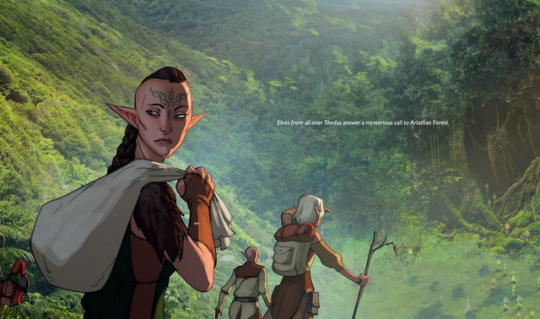
None of this happens in The Veilguard. Not only does Solas lack an army, but their absence isn’t explained or even acknowledged. As a result, Solas remains a passive antagonist until near the end, since the player has no disciples of his to contend with (either physically or ideologically) along the way. It wastes a side of his character that had been foreshadowed in a decade-long cliffhanger – that of a charismatic leader, capable of coordinating a rebellion that could spell disaster for its own followers.
In a Reddit AMA after the latest game’s release, Epler answered where the Agents of Fen’Harel disappeared to:
“Solas’ experience leading the rebellion against the Evanuris turned him against the idea of being a leader. You see it in the memories – the entire experience of being in charge ate at him and, ultimately, convinced him he needed to do this on his own. And his own motivations were very different from the motivations of those who wanted to follow him – he had no real regard for their lives or their goals. So at some point between Trespasser and DATV, he severed that connection with his ‘followers’ and went back to being a lone wolf. There are Dalish clans who are sympathetic to his goals, but even there, there’s an understanding that he’s too dangerous to have a more formal connection with, and that he will, ultimately, sacrifice them to his own ends if necessary.”
I find this explanation unsatisfying, not the least bit because the narrative offers next to nothing to imply this. The disappearance of Solas’s agents represents my biggest bugbear with the game, depriving it of the full potential of its highly anticipated antagonist in favor of the more generically villainous Evanuris. Moreover, this omission fits into the aggravating blueprint for The Veilguard’s inoffensive direction. The motivations, emotions, and backgrounds of the Agents of Fen’Harel would be sympathetic, and therefore might problematize the otherwise cut-and-dry conflicts. Epler seemed concerned that audiences might think Solas was “a little too sympathetic in his goals,” according to an interview with GamesRadar+.
But that’s the thing: sympathy isn’t endorsement, and portrayal of sympathetic characters isn’t endorsement either. But neither does that invalidate the emotions and experiences that generate that sympathy, even if the character’s actions ultimately turn toward evil. I’ve noticed a trend (especially in symptomatic criticism, which I generally dislike5) to view art as propaganda, and to evaluate it from a moralizing, top-down perspective. Antagonists with complex or understandable motivations (in this case, revolutionary villains) are often judged by this framework as tools for stories wishing to champion the status quo. Common arguments that I’ve seen imply that the relatability that we often find in villains is not a strength of the writing, but a devilish trick of ideology by which writers can reinforce conservative doctrine, to scold us away from certain beliefs. Any decent writer knows this isn’t the case, and that people don’t write morally or emotionally complex antagonists for didactic purposes. Instead, characters such as these embody the anxieties of their creators – the fear of losing yourself to your passions, the fear of going about things the wrong way, the fear of sacrificing too much to achieve your desired ends. The concepts and feelings that compel these characters remain authentic to the writer’s heart and the connection they established with the audience.
Art isn’t propaganda. To read it as such reduces it and promotes intellectual dishonesty and foolhardy myopia. Stories are irreducible (otherwise, we would not waste our time with them), and so I believe interpretations should be formed from the bottom-up, rooted in the text as much as possible. The “message” cannot be imposed from the top-down, but symptomatic readings, in their focus on tropes and cultural context, frequently condemn without a trial. Hindering your story in order to future-proof it for the sake of optics is a safeguard against this, and one that leads to bad stories. Artists should have confidence that their text will hold its ground on its own. To quote Ursula K. Le Guin’s essay “A Message about Messages”:
“The complex meanings of a serious story or novel can be understood only by participation in the language of the story itself. To translate them into a message or reduce them to a sermon distorts, betrays, and destroys them… Any reduction of that language into intellectual messages is radically, destructively incomplete.” (67-68)
BioWare’s doctrine of passive writing violates this wisdom by surrendering to their fear of (bad) criticism. The Veilguard lacks punch, stakes, and empathy and becomes incongruous with its established lore because it’s not willing to take risks that might alienate or upset players. They’re more concerned with making sure their work is inoffensive than they are with conveying a moving story.
I believe all of this was inherited from an incestuous feedback loop between a vocal minority of critics, of which I might’ve once counted myself among the blameworthy, and the apprehensiveness of out-of-touch corporate board room decision-making. Dragon Age’s genome mutated, and it slowly lost its teeth.
Over the course of a decade, we bred the Dread Wolf into a Dread Pug.
V. What It Took
The Veilguard’s lack of confidence in itself and lack of faith in its audience contribute to its capitulatory nature. In many respects, it feels like the developers lost their passion for it over the course of the ten year hellish production and just wanted to be done with it. This resulted in a decent game that nonetheless feels divorced from what came before it. It tries to juggle being a soft reboot while also trying to close out the series’s biggest and longest running story arcs, but inevitably fumbles.
Nearly everything done by The Veilguard was handled better by Inquisition. And Inquisition was certainly the more ambitious title. Perhaps more returning characters would have established a sense of continuity between the two, or at least made it less awkward by having them present for the story’s grand finale. For as strong as the endgame is, it could’ve benefited from the presence of slave liberator Fenris, elven history aficionado Merrill, possible Evanuris soul vessel Sera, or Divine Victoria (any of them). The core pillar of Dragon Age is the characters, and The Veilguard’s under-performance (and in some cases, outright dismissal) in that regard sabotages its integrity. Without this to anchor it, the changes to gameplay, visuals, and roleplaying depth become more alienating.
Personally, what do I take away from this? The Veilguard is far from the game I dreamed about for ten years, and not the one that loyal fans deserved either. I’m no stranger to disappointment at this point in my life, and yet this still leaves me with a hollow feeling. Will I still be able to return to Inquisition, a game I truly adore, and see it the same way as before, knowing now where all this is leading? The true cost of The Veilguard, for me, has nothing to do with the price tag: it’s the loss of that perfectly tailored dream, now that the possibilities of the future have shut their gates.
Where do those dreams go? Are they doomed to fester in their lonely, incommunicable agony? Will they be twisted by their enmity, like the blighted dreams of the Titans, and spread their corruption into those important happy memories?
In 2014, I was depressed as fuck, and Dragon Age: Inquisition helped me to see the light and come out of it. In 2024, I was depressed as fuck, and Dragon Age: The Veilguard made me feel nothing. There’s no less favorable comparison in my eyes. It’s disheartening to behold something that once meant so much to me and be greeted with numbness. I have to wonder if that affection will ever return, or if I’ve just grown out of it.
But as I wandered the streets of Minrathous as Rook, I heard a familiar song. It was one of the tavern songs from Inquisition, its nostalgic chords filling me with wistful sentiment. I know, deep down, there’s still something there. Maybe I just need to dig it up. Maybe it’s time to look back…
To be continued…
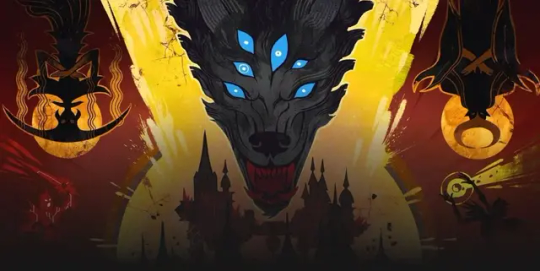
– Hunter Galbraith
Further Reading
Le Guin, Ursula K. “A Message about Messages.” Wonderbook: The Illustrated Guide to Creating Imaginative Fiction, Abrams Image, 2018, pp. 67–68.
Incidentally, this was an anomaly my friends and I pondered over and eventually solved. It turned out to be a former Wienerschnitzel. ↩︎
You could argue that this credit goes more to Inquisition and the previous games for laying the groundwork for said reveals, which were obviously planned out ahead of time, as confirmed by the aforementioned official artbook. Regardless, the payoff satisfied me and gave me proper closure. ↩︎
I’ve been informed that there is a hidden conversation that explains that the Lords of Fortune do, in fact, sell cultural artifacts at times, but only to the rightful owners. This just makes me wonder what they do with the artifacts if the prospective clients can’t pay. Do they shove them back in the ruins and re-arm all the booby traps? ↩︎
I would argue that this does not represent character progression on Isabela’s part, as her (possible, depending on the player’s choices) return of the Tome of Koslun in Dragon Age II was a pragmatic sacrifice she made to save her friends and the city, rather than an acknowledgment of the qunari’s inviolable ownership. In fact, in many continuities, she never returns the Tome at all. ↩︎
I prefer more formalist criticism because it allows the text to lead the dance, not the critique. I think it’s only fair, given that the creators likely spent more effort crafting the piece than I spent consuming it. Symptomatic criticism mandates that the reader consider everything around the text, typically at the text’s expense. In the worst cases, symptomatic critics make their arguments about seemingly everything besides the text in question. ↩︎ Link to article: https://planckstorytime.wordpress.com/2025/01/01/dragon-age-the-veilguard-strangled-by-gentle-hands/
#planckstorytime#writing#analysis#essay#dragon age#datv spoilers#datv rook#dragon age veilguard#veilguard#dragon age inquisition#solas#lace harding#bellara lutare#davrin#elgar'nan#ghilan'nain#neve gallus#taash#lucanis dellamorte#emmerich volkarin#video games#rpg#bioware#dragon age 4#dragon age dreadwolf#da4#tevinter imperium#dorian pavus#inquisitor lavellan#solavellan
291 notes
·
View notes
Text
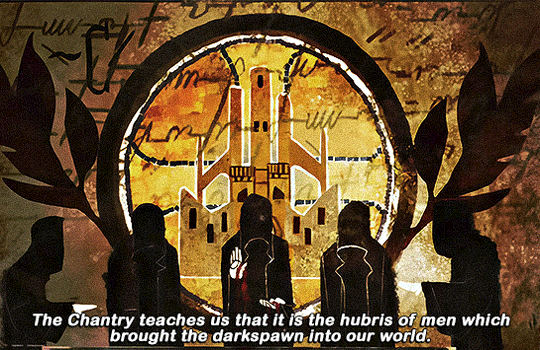

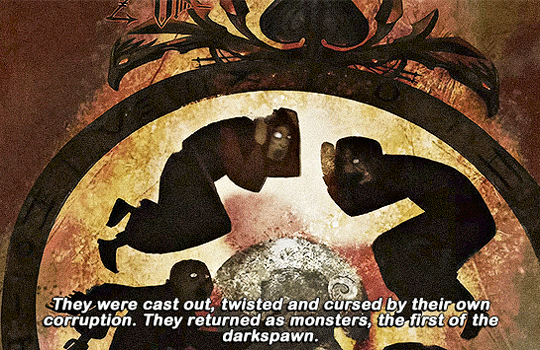

"And so is the Golden City blackened With each step you take in my Hall. Marvel at perfection, for it is fleeting. You have brought Sin to Heaven And doom upon all the world."
#dragon age#dragon age: origins#da:o#dragon age origins#dao#daoedit#dragonageedit#daedit#videogameedit#gamingedit#the chantry#tevinter imperium#magisters sidereal#corypheus#the architect#the golden city#the black city#the blight#darkspawn#* gifs
585 notes
·
View notes
Text
That line that Corypheus says after being released in the Legacy dlc while he's all confused "Be these some dream I wake from? Am I in dwarven lands? Why seem their roads so empty?" highlights how in his time, the Deep Roads really were the commercial and trade arteries of Thedas, and how they must have been constantly bursting full of people and merchants trading and going from one corner of Thedas to the other.

Tevinter controlled most of Thedas, but below the surface, the dwarven empire was what truly connected it, all the distant Thaigs and cities bringing lyrium and other things all over the continent, and even trading with the Chasind and the Avvar as far south as Ferelden (and according to Bianca, its possible the Deep Roads might have gone beyond Thedas itself)

And then Corypheus wakes up a thousand years later and assumes he's on the Deep Roads and is puzzled as to why it all seems so empty and lifeless. And the irony is that, even though he doesn't know it yet, thats what the Deep Roads and all the dwarven lands except for Orzammar and Kal'Sharok have become. A dead, lifeless carcass filled with darkspawn, with decaying statues, crumbling Thaigs and a few squads of the Legion of the Dead representing the fading memories of the glory of the past that once was and will never be again, and slowly fading into history like the dwarves themselves.
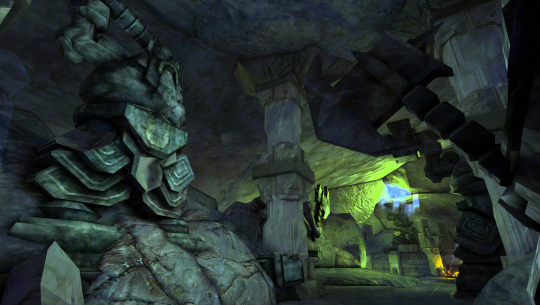

#do you ever think about the dwarves and just cry?#dragon age#dragon age dwarves#dragon age meta#legion of the dead#dragon age lore#corypheus#the deep roads#orzammar#kal'sharok#illusivesoulrambles#thedas#dragon age origins#dragon age 2#dragon age inquisition#tevinter imperium
168 notes
·
View notes
Text
the only person who gives a fuck about dock town is neve gallus
veilguard spoilers incoming!
the only person who gives a fuck about dock town is neve gallus.
you may be thinking, minrathous has an army and defenses in place that could absolutely take on a dragon. and you would be right. but dock town is not part of minrathous proper.
spend ten minutes in dock town. walk past literally dozens of unhoused civilians. talk to any shadow dragon for thirty seconds.
the templar order is more interested in accepting bribes from magisters (see knight commander lenos re: bataris) than stopping people from doing illegal magic (with the obvious exceptions of rana and tarquin, who can only help from the shadows, both literal and figurative).
there is a demon of desperation that easily gets its hooks into a number of people, because they're drawn to their patron emotion. which is desperation. people are desperate enough to draw attention from the fade.
minrathous doesn't give a fuck about dock town.
minrathous doesn't give a fuck about dock town.
minrathous doesn't give a fuck about dock town.
minrathous has an army. dock town doesn't.
minrathous has defenses. dock town doesn't.
minrathous is the largest, wealthiest city in the north, known far and wide for being extremely defensible. dock town is a shack city built in the ruins of the old imperium. many people don't have four walls, or even doors.
dock town, still recovering from the events of solas's first ritual attempt and demon attacks, is not equipped for a siege that should take an army being taken on by a handful of unhoused, unarmed, malnourished citizens.
treviso is a thriving commerce centre run by an affluent assassin's guild, with input from a (corrupt, but) influential government structure. the crows may rule antiva, but there is still support for most everyone outside of their - shocker - drowned district. where they put their homeless population.
the magisterium has no reason to defend dock town, because that's where the poors are. docks can be rebuilt. labour can be bought. people are replaceable.
rook helps people.
rook is the one who, to quote evka, "can find the twisting path through any problem."
rook is the one with the dagger that can get the dragon to land. the dagger is the deciding factor in whichever city you choose, not an extra couple of heroes shooting at a forty ton flying monstrosity that's out of range and raining blight and fire/ice on everything.
but the dagger goes where rook goes, and that is what makes rook the factor that tips the scale one way or the other.
if rook chooses treviso, it is abundantly clear that neve was right. the only person who gives a fuck about dock town is neve gallus.
#dock town is a metaphor you fucks#dock town#dragon age veilguard#dragon age#datv#minrathous#neve gallus#datv spoilers#spoilers#mossthoughts#dragon age neve#neve dragon age#tevinter#tevinter imperium
153 notes
·
View notes
Text

I like that Tarquin has acne. It's gotta be stress acne, right?
That would make sense. I mean, I know I'd have stress acne if a fascist, supremacist cult was openly infiltrating every sphere of my government and I had to rely on my friends & neighbors to try and reduce harm, protect the marginalized, and keep each other afloat.
Oh, wait...
#dragon age#dragon age veilguard#tarquin#shadow dragons#tevinter imperium#datv#dav#dragon age the veilguard
107 notes
·
View notes
Text


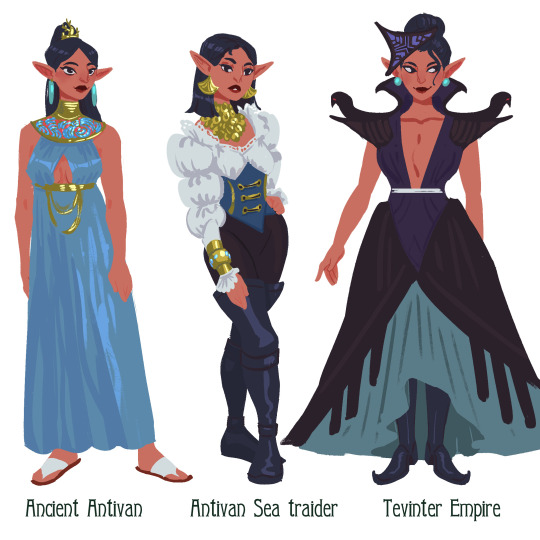
Q: In your rich life experience, have you ever changed your image: cut your hair, dyed it, shaved your head??? Fashion Age: Podiumguard
#dragon age#dainquisition#dragon age fanart#ancient elven inquisitor#lavellan#inquisitor lavellan#dai#da ocs#Thia Da'halla Lavellan#dragonage#elven#elvhen#elvhenan#elgar'nan#elgarnan#Antiva#Tevinter#tevinter imperium#concept art#dragon age 4#dragon age veilguard#dragon age: the veilguard#da4
208 notes
·
View notes
Text

Lies? In my house of God? More likely than you think.
#it went so achingly quenched by thoughts of an imperial chantry shown oncoming#and my tender aching longing towards origins as is and its designs#so here comes my dark reverent<зз#digital art#dragon age#original character#oc#gothic#dark fantasy#dragon age veilguard#dragon age inquisition#dai#dragon age origins#dao#imperial chantry#tevinter imperium#inspired#priestess#vasiliquemort
378 notes
·
View notes
Text
the basics of tevinter politics and social classes, as laid out in world of thedas and a little elsewhere
the archon is the supreme ruler of the imperium. their authority and magical power is believed to be divinely granted. they choose their successors before they die, so they are usually the sons, nephews, brothers, cousins, or apprentices of previous archons. (this phrasing implies that, like the black divine, the archon is always a man, and certainly the several named ones we know all are, but i’m not sure if this is necessarily always true.) if an archon does not choose his heir before he dies, the magisterium elects the next; these candidates cannot be magisters or hold rank in the chantry. technically the archon can overrule the laws passed by the magisterium, but he rarely does this. his power mostly stems from families vying for his favour, as he has the unique power to appoint magisters at will. a man named radonis is the current archon; he’s appeared in comics and a war table mission.
the magisterium are the mage elites who regularly gather to govern the imperium and pass laws. magisters become magisters in several ways:
one is chosen from each of tevinter’s seven circles of magi. it cannot be that circle’s first enchanter
the imperial divine and every grand cleric of the imperial chantry gets a seat
magisters can inherit seats
as i mentioned, the archon has the right to appoint any new magister if he chooses
tevinter society breaks down into four major social classes.
the first mage class is the altus class. these are descended from the original “Dreamers”, through ancient and wealthy magical bloodlines. most magisters come from altus families. characters like dorian and danarius belong to this class.
other mages belong to the laetan class. these are mages who cannot trace their ancestry to the dreamers, and may belong to families with no history of magic at all. many vie for power despite their origins, and one third of the imperium’s archons have been laetans. (the first laetan to rise to archon was such an outrage it caused a seventy year civil war, but that was, like, 1500 years ago-ish. they’re more chill about it now.) it feels safe to assume that neve gallus, who says in tevinter nights that she doesn’t feel at home in a wealthy estate because she has more templars in her family than mages, probably belongs to this class.
the soporati are non-mages who are still full tevinter citizens. they are allowed to own property and serve in the military, but they cannot have a direct say in government or rise above the rank of mother/father in the chantry. they can however be civil servants and merchants. a mage born to a soporati family is instantly a laetan.
slaves are not allowed to own property, or to hold military rank even when armed and serving as a personal soldier or bodyguard. they have become a more even mix of humans and elves since andraste’s time. mages can be slaves. if a slave is set free, either by their living owner before a judge or by their owner’s will upon their death, they are considered liberati. liberati are still not citizens and cannot have political say or hold military rank, but they can join a circle of magi, get an apprenticeship in a trade, take apprentices themselves, and own property. fenris was a slave, while his sister varania was implied to have become one of the liberati.
there is also a large surface dwarf population in tevinter. they are not considered citizens, but instead regarded as foreign dignitaries however many generations their families have lived in tevinter. they have large embassies in every major tevinter city, which at least in minrathous, neromenian, and qarinus are completely subterranean, meaning residents can retain their dwarven caste and may never come above ground all their lives. minrathous’ close ties to the dwarves mean it even has a massive proving grounds, as well as enormous stone golems known as juggernauts to guard the city gates. more than anywhere else in thedas, the dwarves do get a political say, with an elected body of representatives called the ambassadoria who advise the archon and the magisterium. it’s the imperium’s reliance on lyrium which gives them this kind of sway.
383 notes
·
View notes
Text
Rewriting Veilguard Part 2 - The Shadow Dragons
Rewriting Veilguard Part 1 - The World State
Disclaimer: I don't hate the game, I actually think it's quite great given the development hell Bioware went through in those 10 years. This is more of a hypothetical universe where there was less of that behind the scenes drama. Just a fun writing exercise.
Writing an Origin Story Mission for the Shadow Dragons
Now that we have dealt with our World State, it’s time to pick Rook’s background. When I first learned that there would be six factions to choose from, I was honestly very ecstatic. You’re telling me we’re getting six different origin stories for Rook? Did BioWare finally listen to the fans’ wish to get one more game with DAO-style prologue missions before the big main plot begins? Then I learned that six of the companions you meet would represent one of those respective factions, and I was like “Amazing, so you will definitely have one party member with whom you can at least align interests and goals from the start.”
What we ended up getting was…sort of something in the middle. Your backstory is brought up and you get quite a lot of unique dialogue regarding your faction. If you’re a Shadow Dragon, there’s a lot of Minrathous dialogue tailored to you specifically. If you’re a Grey Warden, you’re having an absolute field day whenever the Blight is involved, which is…a huge chunk of the game.
But there was…something missing for me. You see, when we start the game, we’re immediately thrown into this epic mission where Rook, Varric, and Harding find Neve and race to stop Solas. It feels very much like we’re starting somewhere in the middle rather than at the beginning. And that, in my humble opinion, is due to the lack of a unique origin story that you can actually play through. So, here’s what the next few parts of this hypothetical rewrite of Veilguard will focus on: creating six unique playable origin stories that would very much be doable without the vampiric leech known as “development hell” hovering over you. This post will focus solely on the Shadow Dragon origin story, so stay tuned for the others. I’m aware of how long it might take between posts, but I want to make sure I do this the right way.
Creating Rook
We start the game, which immediately kicks off Varric’s opening narration. But instead of Varric talking about Solas immediately, we’re gonna set the stage for the general state of Northern Thedas: with the South experiencing a few years of relative peace, the North is a wholly different story: Tevinter and the Qunari have engaged in a bloody and brutal all-out war, the Grey Wardens are growing more reclusive, strange reality warping occurs in Arlathan Forest, a part of the Antaam broke off and is now occupying Antiva and Rivain, strange whispers arise from the Grand Necropolis, basically, everything is in chaos. But Varric is certain that one person is the key to all this. Cue the distant howling of a wolf and six red eyes. Cut to black.
Now we get to customise Rook and choose our faction. As the title of this post suggests, we’re taking the Shadow Dragon route. The backstory text, however, is going to be different to the one we get in DAV. You see, when reading through those backstories, I got the feeling that all of them sounded like outlines for what could have been the origin story quest. I am actually 100% confident that BioWare planned on including prologue missions at one point but had to scrap them due to development hell reasons. And all of the six summaries essentially boil down to “you upset some higher authority and now your faction wants you out of the spotlight.” All the choices regarding Rook’s personality have already been made for us. Playing this actual backstory allows us to roleplay in a roleplaying game, which…shocking, I know, but here me out. Instead, the origin text we get when we click on the Shadow Dragons is simply going to be:
“You are a Shadow Dragon. This underground resistance opposes corrupt rulers and slavery in Tevinter. Coming from all walks of life, they are determined to bring justice to the people. As a member of House Mercar, a renowned Soporati family renowned on the battlefield against the Antaam, you have much influence to bring, and much to lose.”
That’s just the small little snippet we see when hovering over the option. But that’s all we’re gonna get for now. There is no mention yet of Rook’s personality as we’ll get to shape it ourselves a little bit. So, we customise our Rook, finalise our massive World State, and click on the play button at last.
Varric’s narration continues, just like in DAV, but this time, he’s going to give us our chosen faction’s backstory. We get a recap on how Dorian and Maevaris founded the Lucerni shortly after the war with Corypheus and how much of a ray of hope this group was in the twisted and corrupt society of the Tevinter Imperium. But then, some of the more powerful magisters began to heavily push against them, eventually leading to Maevaris being framed for treason and losing her seat in the Magisterium. She took all the blame on herself so that Dorian would be able to retain a spotless reputation and continue their work on the great political stage. Maevaris took the remaining Lucerni underground and formed the Shadow Dragons, continuing their work under a different name. Now unbound by political restrictions, the Shadow Dragons are free to take more radical measures in their fight against oppression and slavery. And Varric is confident that the perfect candidate to go against the bigger threat can be found in this group.
The Shadow Lair
Our story begins in Minrathous, in the underground base of the Shadow Dragons. And right off the bat, we’re making a change regarding said base’s location. In DAV, it stands in a random building somewhere in Dock Town that pretty much anyone could access. I get that they were probably going for the “hide in plain sight” approach, but let’s actually have some fun here.
In this rewrite, the Shadow Dragons are literally operating from the underground. Now, Minrathous’ underground system has two things that are very beneficial for a secretive rebellious organisation:
Vast catacombs. The catacombs of Minrathous are so massive that they can store food to survive years of siege. Minrathous, like so many cities and settlements in Tevinter, is built on the bones of Elvhenan. You can easily get lost in those catacombs.
Gigantic sewers. The sewers are arguably even more treacherous than the catacombs, because we have seen in Tevinter Nights what can lurk there. Imagine the sewers of the greatest city in the world, the greatest magical city in the world. Surely it comes with its own set of urban legends akin to the sewer gator. But in a city like Minrathous, those legends are probably true. Failed magical experiments, lyrium-infused mutations, abominations of former mages who failed some twisted blood magic experiment, possessed objects; all this can be found in Minrathous’ sewers. Dangerous for everyone, and therefore perfect for the Shadow Dragons.
The Shadow Dragons operate from a place called "The Shadow Lair”, a section of an underground district known simply as “The Undercity”. That’s where all the poor and forgotten retreat if they wish to disappear from the world, or criminals who flee the Imperium’s justice system. A dangerous but also perfect place.
NOTE: For the duration of the prologue, Rook will be referred to by the name of Mercar, as “Rook” is the name they give themselves after disappearing from the scene.
Depending on what race Mercar is, the stakes vary:
If Mercar is a human, they are the direct heir of House Mercar, destined to take over the family name one day. If Mercar is a human mage, they are currently in the process of getting their family appointed to Laetan status, which will give them more political power and influence.
If Mercar is a dwarf, they are an adopted scion of House Mercar.
If Mercar is an elf or a qunari, they are an official slave of House Mercar, but it’s made pretty clear in the beginning that House Mercar’s slaves are slaves in name only, while actually being more akin to paid servants. House Mercar simply refers to them as slaves to stay under the Magisterium’s radar and actually uses them to pass on information to the Shadow Dragons.
I was personally disappointed that DAV didn’t really touch on Tevinter’s slavery system. It felt a bit like I was treated with kid gloves and not given the trust to being able to handle dark topics. But Tevinter, as has been established in all DA media before DAV, is a pretty dark place for anyone who isn’t a human mage. And it’s important to depict that as it shows the stakes and just how rotten of a society the Imperium is. We need to see what the Shadow Dragons are actually fighting for. It’s not enough to just tell us how much a freedom fighter group we are, no, we need to see it.
Meeting the Leaders of the Shadow Dragons
For the sake of this playthrough, our Mercar is going to be a human mage, and thus not only the direct heir to the house but also one who can elevate it to Laetan status. We have a lot to lose, so we must be extra careful in this precarious situation.
So Mercar meets with the leaders of the Shadow Dragons, namely Maevaris and the Viper. From this conversation, we get the general gist of what’s about to happen and why we are here: House Mercar decided to get a bit more involved with the Shadow Dragons after both parties discovered a massive plot for something big involving Minrathous’ vast slave population. Whatever it is, it’s happening somewhere in Dock Town, and we are to rendezvous with Neve Gallus, a local and renowned detective, to get to the bottom of this.
Exploring the Shadow Lair
After the conversation, we get to have a quick look around the Shadow Lair, where we can instigate a small series of encounters:
We can talk to Maevaris some more and learn about her past and her motivation behind what used to be the Lucerni.
We can talk to the Viper and learn more about him, how he’s usually running operations and that he’s from an Altus house. But that’s about everything you can learn about him at this point in time.
We can meet Lorelei and learn about her being one of the city elves Loghain sold to Tevinter all the way back in DAO. She will give a few remarks on how the Hero of Ferelden dealt with the Alienage and how she and Alistair made it a more just place.
NOTE: For this rewrite’s hypothetical playthrough, the Hero of Ferelden is a Human Noble who romanced Alistair and became Queen of Ferelden. She is now searching for a cure for the Calling.
We can have a bit of a look at the Undercity and just see how much of a poor and dark place it is. This is the gutter, no, this is below the gutter. The people here wish to disappear. They are miserable, most of them have given up hope. The Shadow Dragons are the only ones who actually care about them.
Since the Undercity is below modern Minrathous, we can see traces of ancient elven architecture on display, including mosaics and frescoes.
An Old Friend
Just as we’re about to leave for Dock Town, a familiar face strides into the Shadow Lair: Varric Tethras. Yes, we actually get to see Rook’s first meeting with Varric here! Maevaris greets and introduces him to us (and we actually get to know that Varric and Maevaris are family, which DAV kind of glossed over, thank you very much). Mercar gets to have a first chat with Varric, where he assess our personality. This vibe check is what allows us to determine Rook’s general personality: are we diplomatic, humorous, or aggressive? I fully get that Varric wouldn’t pick an evil person to fight against Solas, but we should still have some kind of roleplay room regarding Rook’s way of thinking and speaking.
Varric’s purpose in these prologues is very similar to Duncan’s in DAO. He’s the one who recruits you into the larger fight and acts as a mentor figure for a while. I was actually fully expecting that to be the case in the actual game when we were told that Varric recruits Rook into the fight against Solas. Well, he did, but I would have liked to see it! Alas, we shall do so here!
Varric stays behind in the Shadow Lair while we go off and do our thing.
Entering Dock Town
Dock Town is pretty much right above the Undercity, the gutter above the actual gutter. The entrance to the Shadow Lair is quite hidden with enchantments, known only to Shadow Dragons and their associates.
Dock Town is going to stay pretty much exactly as we see it in the game. If there is one place in Minrathous where everyone could mingle without being necessarily immediately prosecuted, it’s that place (which is probably why that’s the only part of Minrathous we see in the game, but I digress). However, there will be one major change: slavery is still a thing.
Dock Town is…well…a place where ships dock. That includes ships of slave traders and prisoners of war. In this rewrite, Tevinter is still locked into a war with the Qunari, so there will be a lot of that reflected in the environment. As we walk through Dock Town, we see guards on high alert, slaves and prisoners being led away in chains. We’re doing some important environmental storytelling here that lets us know exactly why Tevinter is a place that needs to be liberated and changed so desperately.
Meeting Neve Gallus
We find Neve Gallus at the Cobbled Swan. Depending on dialogue choices, we might or might not have heard of her up to this point. I think it would be fun if Mercar could geek out about her because he read some sensationalist tabloid about one of her cases.
So Neve tells us that a huge part of Dock Town was closed off for a great event, a former small coliseum that hasn’t been used in decades. Coincidentally, several unpurchased slaves and prisoners of war are being dragged into that area.
Neve has a good lead to assume that the Venatori are somehow behind this because of course they are. Neve gives us a recap on what the Venatori are and how she had multiple run-ins with them already. She is to be absolutely certain that Mercar can be trusted as they will need to work together on this. In response, Mercar shares his side of the information, that his father, Charon Mercar, who is also a respected Legatus in this rewrite, oversaw a strange pattern in how many prisoners of war and masterless slaves, primarily from places like Ventus and Carastes, Qunari-conquered cities, have simply disappeared, and how surprisingly many military vessels have been transferred to Minrathous. Since Neve is a detective, it’s fun to make this part of the journey feel a bit like a crime mystery.
Once all information has been shared, Neve declares that it’s time to go.
Approaching the Coliseum
Neve takes us across Dock Town’s roofs towards the closed-off area of the coliseum. There, we see just how massively guarded it is. The official excuse for all this is a military training exercise. Horrifyingly, this is much closer to the truth than we realise. There are Imperial Templars and Legionnaires patrolling the outskirts, so we have to find our way in.
Neve directs us to a secret hiding spot, where we meet Tarquin, who is, as we know, an Imperial Templar working for the Shadow Dragons. Not even he knows exactly what’s happening, but something definitely big is going on.
There are two options before us: do we sneak in from above and observe from the shadows, or do we disguise ourselves as templars and participate in a more open manner? This right here gives us another choice regarding Mercar’s way of doing things. Are we feeling confident enough to just walk in and hide in plain sight? Or do we take the stealthy approach? While Neve is all for stealth, Tarquin prefers the closer look. So a first major choice presents itself:
Follow Neve and observe the proceedings from above, quietly gathering the information you need.
Follow Tarquin and disguise yourself as an attendant, getting a much closer look at the proceedings.
So I’m feeling a little brave right now. I think my Mercar would try to do the bold approach to get better results, even if it means a higher risk. For this playthrough, I’m choosing to follow Tarquin and let myself be disguised. Neve begrudgingly follows along.
Entering the Coliseum
A few minutes later, Mercar, Neve, and Tarquin approach the Coliseum gates in disguise. Tarquin wears his Templar armour, while Mercar and Neve are dressed as mages of the Legion.
Once we enter the arena, we have the chance to explore it for a little while. Doing so allows us to encounter the following:
We can have an early chat with Magister Zara Renata, who will, of course, be very relevant later, along with her lackeys Felicia and Calivan, all of whom are prominent members of the Venatori. Neve is able to make that connection due to Felicia’s brother Livius having so notoriously attempted to corrupt the Wardens at Adamant Fortress in DAI.
We may encounter Magister Bataris, alongside his son Albin and get early hints of just how far the Venatori corruption runs.
If we make a good enough persuasion attempt at the Templar Captain guarding the entrance to a basement, we shall enter it and discover the prisoners and slaves intended for some heinous affair. Here, and only here, if we perform this correct dialogue choice, and being a human mage, unfortunately, certainly helps here, we get to see that our father, Charon Mercar, is among the imprisoned. And the worst of it all? He doesn’t even recognise you. Actually none of the slaves and prisoners react in any way, as all of them seem to be under some sort of spell. As we look closer, we can see that all of them have strange spiked collars around their necks, filled with blood. This is blood magic that keeps them entranced. If we want to risk it, we have time to break our father’s collar and ensure that perhaps, he can escape. So we do just that.
The Imperator
Following our exploration of the Coliseum, we get streamed into a crowd of onlookers as the Imperator of Tevinter’s legions, the Supreme Legatus himself, Magister Aemilianus Laskaris, enters the centre of the arena.
We know from DAV that Tevinter has an Imperator, and the Imperator is not the same as the Archon in this context. While the Archon is the overall ruler, the Imperator is the highest military commander. Think of this guy as Tevinter’s version of Loghain. Laskaris also happens to be one of the loudest voices responsible for forcing the Lucerni out of the Magisterium.
Laskaris delivers a speech in which he proclaims just how bad Tevinter is faring against the Antaam. Here we get some early insight into the fact that a large chunk of the Qunari army broke off and is now bearing down on Antiva and Rivain. However, a large part of it remained and is following the Arishok into battle against the Imperium. And even against this broken Antaam, the Legions are starting to fail.
Laskaris cites lost cities such as Ventus, Carastes, and Neromenian as evidence for the desperate situation Tevinter is now facing. Therefore, something must be done. Something drastic. He presents, to the gathered onlookers, the Salvatio Initiative. Basically, all unpurchased slaves and prisoners of war are to be given to Tevinter’s legions, where Laskaris and the Legates serving under him will perform blood magic rituals to turn them into mindless but ravaging soldiers against the Antaam. Dangerous cannon fodder essentially. He will use tonight’s demonstration to convince the gathered members of the Magisterium to pass a law that will officially permit Tevinter’s legions to use blood magic. Well, we know, Tevinter has always used blood magic behind closed doors, but this will mean that all safety measures are off, all precautions, all careful attempts at hiding it. And the worst part is: since slaves are considered nothing but tools, it won’t even be seen as unethical by the large portion of conservative Senate members. And prisoners of war? Qunari? Who cares about them anyway, right? This is the darkness and true corruption permeating Tevinter. This is exactly why the Shadow Dragons exist to bring back the light.
Several doors open and Laskaris directs all slaves and prisoners to be brought forth. They are all wearing the blood collars. Upon the Imperator’s command, him and several blood mages under his leadership, activate the blood collars and turn the slaves and prisoners into an absolute frenzy. A battle erupts in which the sheer destructive power of the now-mindless fighters is demonstrated.
Mercar now has a choice to make, and it is the biggest one there is in the prologue:
Do we stealthily fight the blood mages and try to rescue the innocent mind-controlled people without blowing our cover? You do, however, risk your father dying.
Do we rush in headfirst and fight Laskaris head-on, saving your father but maybe dooming more innocents and risking exposure?
Do we put our personal emotional interest above the greater good or vice versa? Well, because we broke our father’s collar earlier, we can at least assume that he’s going to be able to fight for himself with a clear head, so let’s focus on the blood mages in a stealthy manner.
Neve and Tarquin quickly take us behind the scenes as the crowd watchers in apt interest. There are five blood mages, including Laskaris, who need to be dealt with. Neve takes one half, Tarquin the other, while you have a go at Laskaris himself. You are masked so he won’t know it’s you.
While Neve and Tarquin successfully dismantle two blood mages each, we sneak right up to Laskaris and try to either knock him out or backstab him altogether. This results in the same outcome but tells a lot about Mercar’s personality. Do we kill this guy and end it now? Or do we try and incapacitate him so that he can still be of use for the future?
Regardless, Laskaris sees it coming and engages in a boss battle against us. It’s a tough battle, one that we are logically meant to lose. If we get Laskaris down to 0HP, miraculously so unless we play on Storyteller mode, the cutscene will slightly change but the outcome remains largely the same.
Laskaris lashes out and wounds us, causing us to fall down, bleeding, losing our mask, exposing ourselves to Laskaris, while the slaves and prisoners stage a mad revolt around us, forcing the gathered magisters to flee the scene. But because we freed our father from his collar, he comes rushing in to save us, engaging Laskaris in a one-on-one duel. Despite “only” being Soporati, he puts up quite a fight with his huge two-hander. We want to help him, desperately so, but we are just too weak. Laskaris is impressed by Charon’s strength, but ultimately, deals him a mortal wound. Just before Laskaris turns to finish us off, he is struck in the shoulder by…Bianca!
Varric steps into the fray and fires off a row of bolts against the Imperator, allowing Neve and Tarquin to take us away as we pass out. As they do so, the Viper appears and casts a spell that shrouds the whole arena in fog.
Back at the Shadow Lair
We awaken in the Shadow Lair and are greeted by Varric. It turns out that he was using this whole mission to assess us from the background, to determine if we are the one he’s looking for. And he decides that, yes, we are. Laskaris, the Venatori, all of this is just one puzzle piece of something much greater. We can press Varric on what this could possibly be, but he won't tell us just yet. Instead, he tells us that we should disappear. And he might just be able to help with that. We can be incredibly outrageous about this. I just discovered the biggest plot to endanger slaves ever since the Magister Sidereal tore open the Veil to reach the Golden City! I can’t just leave right now to pursue something I don't even know about!
At this point, Maevaris joins us and agrees that Mercar has to disappear for a while, now that Laskaris knows who we are. We can’t be seen with the Shadow Dragons for the time being. Doing so would just endanger the whole cause.
Reluctantly or readily, that depends on our personality, we concede that there is sense in Varric’s words. Varric advises us to adopt a codename as well, like so many agents of the Inquisition did back in the day. Mercar thinks for a moment, reflects on the most recent events, and decides on “Rook”. Varric approves. “The strongest piece on the chessboard, I like it.”
Afterwards we get a final chance to talk to the members of the Shadow Dragons before we depart, and get a last look at the Undercity. Neve returns to Dock Town to keep an eye on Laskaris and the slave rings, as well as search for any Venatori ties.
What follows is a cutscene where Rook and Varric depart the Shadow Lair and leave Minrathous altogether. One last time, Rook looks at the city he swore to fight for, then turns around and follows Varric into the unknown.
And that’s as far as we’ll go today! I hope you enjoyed my little hypothetical take on a potential Shadow Dragon origin mission. Of course, not everything is refined and perfect, but I hope you still got the overall gist of what I was going for! Next time, we shall focus on a potential prologue for the Grey Wardens! Stay tuned!
Rewriting Veilguard Part 3 - The Grey Wardens
#dragon age#dragon age the veilguard#dragon age dreadwolf#datv#datv spoilers#varric tethras#dragon age rook#maevaris tilani#dorian pavus#tevinter imperium#minrathous#rewrite#rewritingveilguard#veilguard critical#creative writing#neve gallus#tarquin#the viper#shadow dragons#rook mercar#rook
141 notes
·
View notes
Text
Remember what I said about how much more opulent Orlais looks compared to Fereldan?
Denerim (Fereldan)

Val Royeaux (Orlais)

And now Minrathous (Tevinter Imperium)

Is it any wonder the Vints always refer to the south as a barbaric place if this is what their capital looks like?
And this is Minrathous after a thousand years of decline. Imagine what the Imperium must have looked like in its prime. Imagine what Arlathan must have looked like!
This is the kind of heavy lore that makes me love Dragon Age.
#dragon age#dragon age origins#dragon age inquisition#dragon age the veilguard#dao#dai#fereldan#orlais#tevinter imperium#denerim#val royeaux#minrathous#elvhenan#arlathan
200 notes
·
View notes
